
















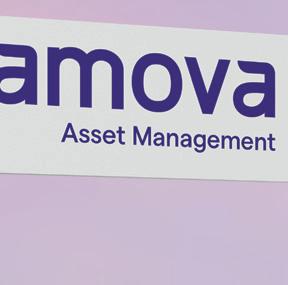




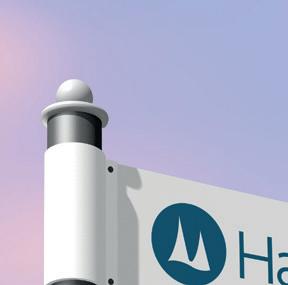













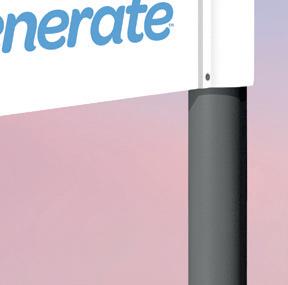


































































Sam Bryden
KiwiSaver recently turned 18. While this isn’t quite the epic personal milestone it has been for generations of New Zealanders, it nevertheless reflects a growing maturity that has been marked by significant learnings and recent subsequent changes.
When KiwiSaver was launched back in 2007, Kiwis generally viewed the investment market with at best a distant curiosity – many preferring the bricks and mortar of residential property as their own personal retirement savings vehicle. Fast forward to today and while we still haven’t fallen out of love with property, over 700,000 Kiwis now invest directly in stocks or funds through online platforms and the overall pot of KiwiSaver funds under management has surged past $120B.
Kiwis are becoming ever more engaged in, knowledgeable about and comfortable with investment market dynamics and volatility. This growing familiarity has encouraged successive Governments to introduce a number of enhancements aimed at accelerating individual KiwiSaver balance growth. Most notably this has included opening up the option to make 10% employee contributions in 2019; changing the default setting from ‘conservative’ to ‘balanced’ in 2021; and just this year increasing the minimum compulsory contribution rate to 3.5% from 2026 and then 4% by April 2028. These have all been positive moves. However, for the majority of KiwiSaver members – those with 20-plus years of earning ahead of them – the default balanced setting simply does not go far enough to match their retirement savings ambition. And according to the country’s leading financial advisers, most Kiwis should therefore be going a step further and switching their settings to ‘aggressive.’
Without knowledge or experience, the jump from balanced to aggressive can feel like a leap of faith. But for those KiwiSaver members who have been playing close
attention to the market and have seen its long-term resilience through cycles to continue to deliver growth over time, there’s a growing appreciation that with time on their side, there’s no need for defensive assets within their retirement portfolio.
Switching from balanced to aggressive doesn’t mean throwing caution to the wind. Nor does it mean putting all your eggs in one single-sector basket. It simply requires better choices and greater diversification to be available within the high-growth sub sector of KiwiSaver.
Last month we responded to this need by adding two aggressive funds to our multi-manager GoalsGetter KiwiSaver Scheme mix: a new high-growth fund of our own and Milford’s Aggressive Fund, which now sit alongside the Generate Focused Growth Fund we started with.
The Milford fund, which has a 95% allocation to growth assets, predominantly through international equities, has returned 10.55% p.a. before tax since inception in 2019. Meanwhile the new Amova High Growth Fund, which is actively managed by our vastly experienced Head of External Managers, Alan Clarke, goes a step further with allocations of 67% international equities, 24% Australasian equities and 7% listed property. It has just 2% allocated to cash.
While I’d love for us to take all the credit for this product evolution, it’s genuinely the result of collaboration with financial advisers who are seeking the tools to support their clients’ retirement goals.
Notwithstanding individual circumstance and risk profile, once a client has bought their first home, advisers have told us that they are now generally advocating for them to have their KiwiSaver investment entirely in aggressive funds right through until at least their early to mid-fifties. This is because throughout this time in your life, you’ll be focused on long-term outcomes and have time to keep going through investment cycles.
The reason the GoalsGetter scheme appeals to advisers to support this switch, is that it offers two layers of risk protection through diversification: firstly through the diversified funds themselves, and then the ability to hedge on the performance of all three. Indeed, this is how one adviser described the diversified approach:
“For clients with balances of over $500K still seeking exposure to high growth, I’d go so far as to say this is an essential risk mitigation strategy.”
As you’ll see if you check out the advert opposite, the Nikko AM brand – which powers the GoalsGetter platform – has now changed to Amova. We’re fortunate to be part of this truly global network, and through it can apply the rigour and strategies associated with the company’s institutional investment heritage to our retail and KiwiSaver products here.
All the funds available through our GoalsGetter KiwiSaver scheme have been hand-picked and pre-vetted by our investment experts to derisk the selection process for direct customers and/or advisers as they curate personalised diversified portfolios for their clients.
This evolution of our KiwiSaver Scheme is very much in line with the GoalsGetter philosophy of connecting individual investors, either directly or through their financial adviser, with expert strategies tailored to their savings ambition. If you haven’t already, check out our website or download the GoalsGetter app to have this expertise and service at your fingertips.
Sam Bryden is Head of Distribution for Amova NZ, part of the global Asset Management company formerly known as Nikko AM which has over US$260B in funds under management. A










Many
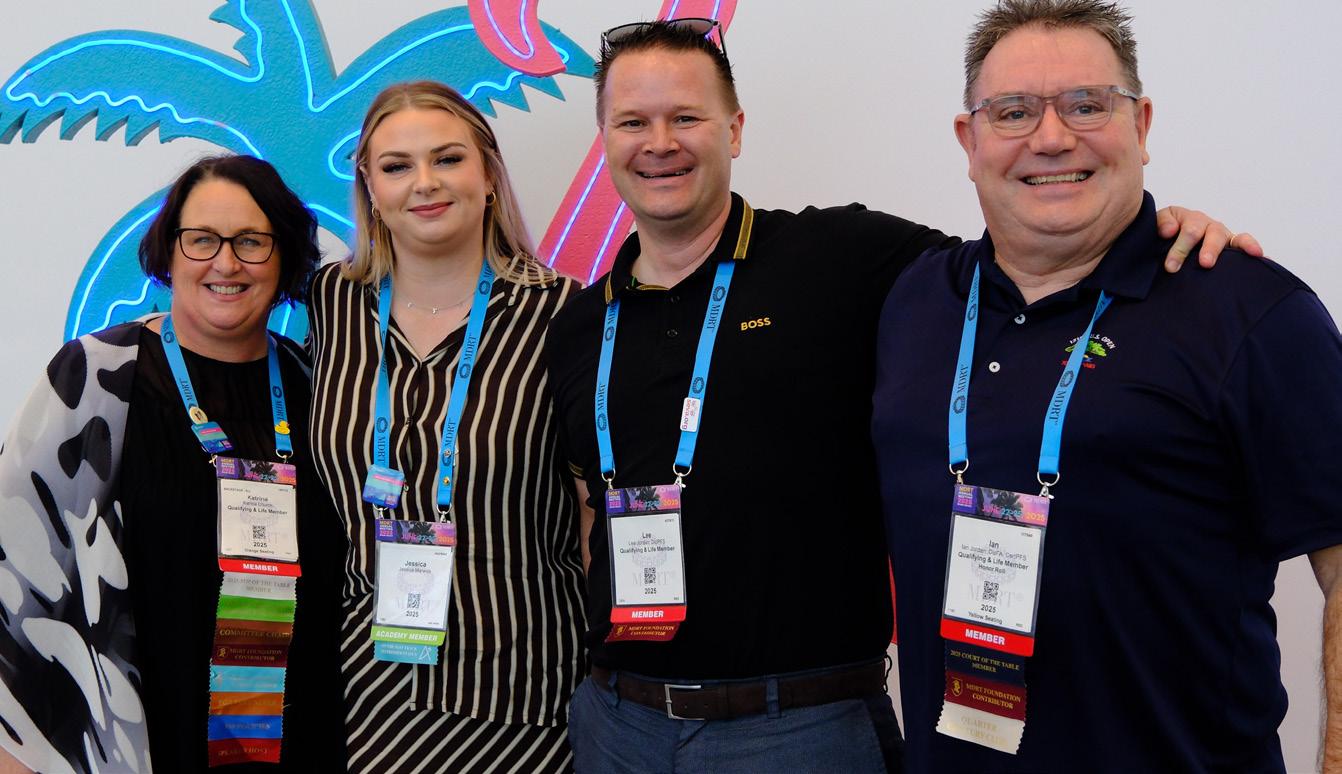
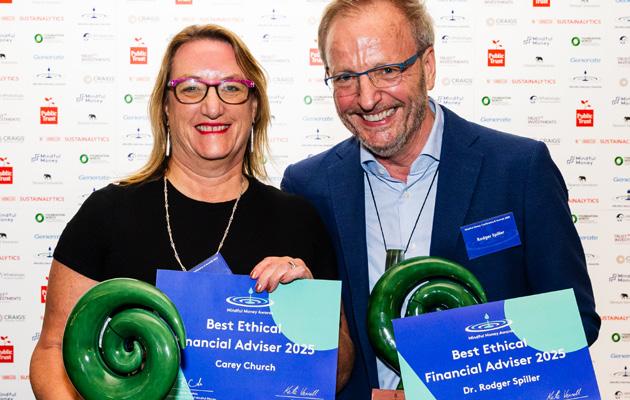
Philip
David

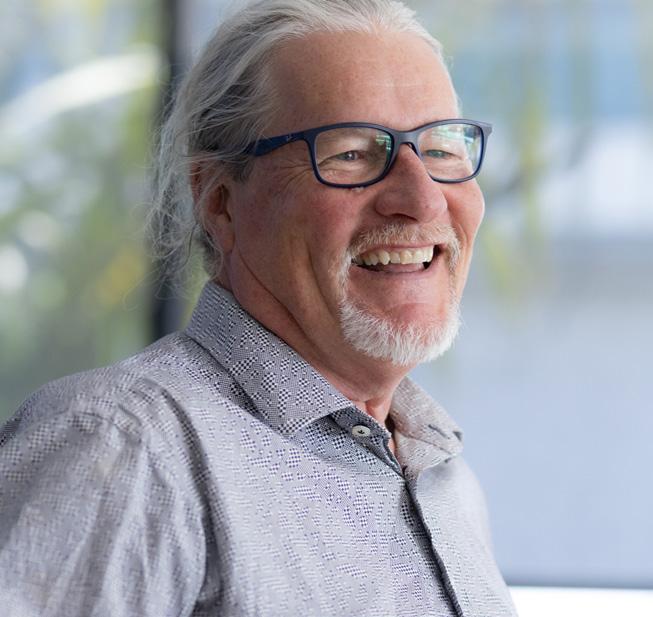
take a million-dollar
In this issue of ASSET, we’ve set out to demystify ethical investing and to show advisers how to put together an ethical portfolio for your clients.
I really appreciate that a number of advisers who specialise in this area have shared their processes and thoughts.
One of the really interesting things is that you don’t have to fill a portfolio with a whole bunch of funds you don’t know about.
Most of the funds ethical advisers use in their portfolios are exactly the same funds you may already be using.
Another salient point, which struck me as an incredibly valuable part of building an ethical portfolio, is that it requires good conversation with clients - truly getting to know them and what they want with their investments.
Building relationship with your clients is such an important part of financial advice.
Head office and advertising
1448A Hinemoa Street, Rotorua PO Box 2011, Rotorua
0274377527
philip@tarawera.co.nz
Publisher
Philip Macalister
Publishing co-ordinator
Annamarie Jensen
Photography
Alisha Lovrich
Staff Writer
Ksenia Stepanova, Jenny Ruth
A third observation is that you can use both active and passive funds in portfolio construction.
It’s always surprised me how adverse New Zealand advisers are to embracing ethical investing.
Investors want it; and embracing ethical investing can strengthen your business. And on the other side, fund managers are creating the products to help advisers service these clients.
Really, it’s not too hard to build ethical portfolios. More advisers need to start doing it.
The other big piece in this issue of ASSET is my essay on the recent Million Dollar Round Table (MDRT) conference in Miami.
Around 40 Kiwis made the trek to Florida, and all the reports have been
Design Michelle Veysey
Contributors
Russell Hutchinson, David Van Schaardenburg
Subscriptions
Annamarie Jensen
P: 0274 377 527 E: subscriptions@tarawera.co.nz
Disclaimer
All articles in ASSET are for information purposes only, the content is intended to be of a general nature, does not take into account any person’s specific circumstances, and is not financial, legal, or other advice. It is recommended you seek advice from a suitable expert before taking any action in relation to anything contained in this magazine.
excellent.
This wasn’t my first MDRT rodeo but this time I’ve taken a different approach, writing about the experience as an essay, to try and convey what it’s like to attend one of these mega events.
Becoming a member of MDRT and writing enough business to qualify for the annual meeting is a great, aspirational goal, and something worth striving for.
MDRT have their annual roadshow coming up soon. And you can find details in the Good Returns diary.
Philip Macalister Publisher
ASSET is published by Tarawera Publishing Ltd (TPL). TPL also publishes online money management magazine Good Returns GoodReturns.co.nz and TMM – The Mortgage Mag. All contents of ASSET Magazine are copyright Tarawera Publishing Ltd. Any reproduction without prior written permission is strictly prohibited. ISSN 1175-9585
How to update your mailing address Make sure you don't miss an issue by changing your address. Go to: tarawera.co.nz/coa
ANZ’s new Turning the Tide report shows that young New Zealanders are embracing KiwiSaver at encouraging rates, with 27% of 16-17 year-olds contributing even without government or employer matching.
However, significant regional and gender disparities still persist, and there is a lack of contributions from 40% of KiwiSaver members.
The research showed that Generation Z members have a 53% contribution rate despite high youth unemployment, while a 15-year-old starting work at 21 could accumulate $1.16 million by retirement age, or $689,000 if they buy a home at 35.
Men contribute more than women in all age groups except Generation Alpha, with the savings gap reaching $17,000 by age 64. Male KiwiSaver members average $38,206 while women hold $32,133.
There are also significant regional differences, with South Island areas leading participation. Marlborough, Otago, Southland and Canterbury
Two major deals involving Australian investors have emerged in New Zealand's financial services sector, with transactions totaling billions in assets under management.
Sydney-based private equity firm Mercury Capital is seeking up to a 30% stake in Forsyth Barr, the country's second-largest investment firm with $32 billion under management. The deal, subject to shareholder approval, is expected to complete in August with no purchase price disclosed.
Mercury Capital, founded in 2010 with over $2 billion in funds under management, specialises in growth capital for Australian and New Zealand businesses. Founder Clark Perkins was previously managing director at Goldman Sachs JB Were, where he had also headed merchant banking.
Mercury Capital chair David Kirk described the Forsyth Barr investment as reflecting "confidence in our strategy, market position and future growth." The firm employs over 600 staff across 25 offices, with more than 300 employees holding shares.
Managing director Neil Paviour-Smith said
exceed 70% engagement, while Auckland and Northland languish at just over 60%.
Younger generations are increasingly choosing growth-oriented investments, with 64% of Generation Alpha members in growth funds compared to just 35% of millennials and 12% of baby boomers in growth funds.
ANZ Investments managing director Fiona Mackenzie says the data shows younger Kiwis view KiwiSaver as their primary retirement savings vehicle, rather than relying on NZ Super like older generations.
“We’re at a pivotal moment in shaping our retirement savings system,” Mackenzie said. “With the right support Gen Alpha and Gen Z could lead New Zealand into a future where retirement is secure, equitable and sustainable.
“If we hope to achieve this, we need a shared commitment to addressing the longterm sustainability of NZ Superannuation and KiwiSaver through adjustments to both systems.”
Mackenzie said this should include a “serious look” at increasing the default KiwiSaver contribution rate and the retirement rate, along
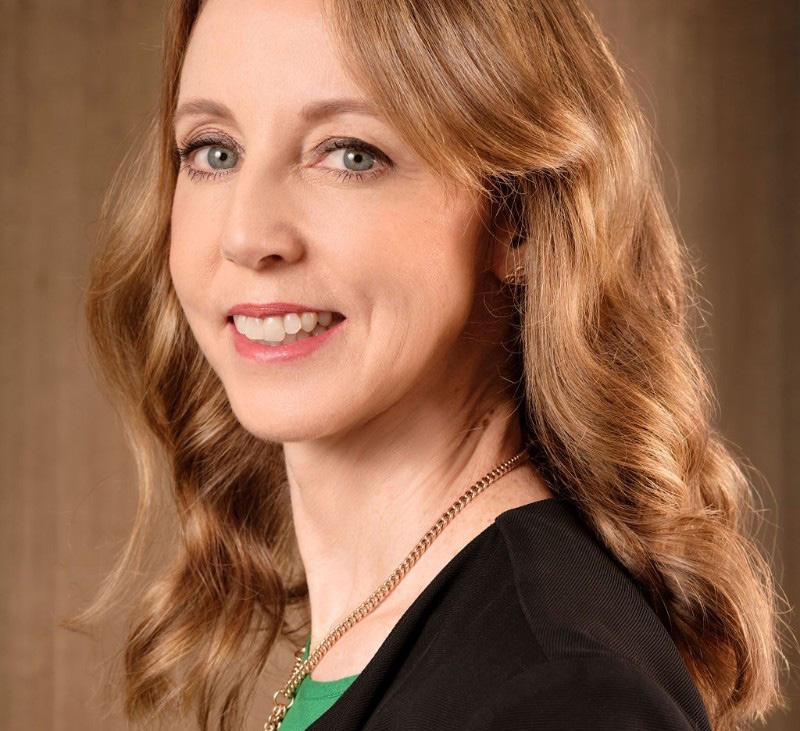
with more incentives and help for those who find it difficult to save. Financial literacy initiatives are also important.
The findings come as the government prepares to increase KiwiSaver contribution rates from 3% to 4% by 2028 and extend employer contributions to workers aged 16-17 from April 2026..

Mercury shares Forsyth Barr's view that "trusted personalised advice is more important than ever to help clients navigate a world of accelerating change."
Meanwhile, Australian Shaw and Partners recently took control of Investment Services Group, which includes Clarity Funds, Devon Funds, JMI Wealth and Select Wealth. ISG has expanded further by acquiring fund distributor The Investment Store from industry veteran Matt Mimms, who established the business in 2006.
The Australian firms are also attracting interest from overseas. Canada's Canaccord Genuity has acquired Australian stockbroker Wilsons Advisory for an undisclosed sum, adding A$81 million in revenue and A$16.7 billion in assets under advice. Craigs Investment Partners held a 50% stake in Wilsons.
The deals come as New Zealand's major investment firms build substantial war chests. Craigs recently sold a stake to US private equity firm TA Associates.

Greg Smith is leaving his role as head of retail at Devon Funds Management to join Generate as an investment specialist. The newly-created position will see him acting as a bridge between the investment team and external audiences, focusing on communicating investment strategies to advisers, media, clients, and the public.
Smith's departure follows Australian firm Shaw and Partners taking a majority stake in Devon's parent company, Investment Services Group.
Generate chief investment officer Sam Goldwater said the newly created role ensures "our investment team's insights are effectively communicated to our clients and the broader market."
Smith brings two decades of experience in financial markets, having previously been head of research at Australian funds management and market research firm Fat Prophets, and global investments operations manager at Mellon Global Investments in London.
He is a regular market commentator on Newstalk ZB, NBR and TVNZ, and contributes to The New Zealand Herald and Stuff.
Scott Jensen has been promoted to executive manager claims and customer solutions at Asteron Life.
Jensen has been acting in the role since January and brings 17 years of financial services experience, including previous positions at Suncorp and Zurich Financial

Services. He has spent five years with Asteron Life.
Asteron Life chief executive Grant Willis said that advisers and partners value Jensen’s empathy and claims experience in the industry.
"Scott has led the Claims and Customer Solutions teams since January when he took on the acting role, and has been a strong contributor in the Asteron Executive team,” Willis commented.
Jensen said his focus would remain on delivering customer outcomes across claims and service operations. "Our focus as a team is on the customer and ensuring every interaction is responsive and built on trust," he said.

Kady Buchanan has joined Milford's wholesale team as head of intermediary clients. Buchanan will build and nurture relationships across Milford's independent adviser network.
In July, Milford's KiwiSaver scheme reached $2 billion in funds under
management via the independent financial adviser channel since launching in 2019.
Head of wholesale Michael Robson said Buchanan is "highly regarded within the industry and will play a valuable role in supporting the advisers working with us."
Buchanan brings over 20 years of experience in global institutional equity and property sales, including roles at UBS Investment Bank in New York and London, and Habitat Property in Hong Kong. Most recently, she was senior relationship manager at Nikko Asset Management in Auckland.
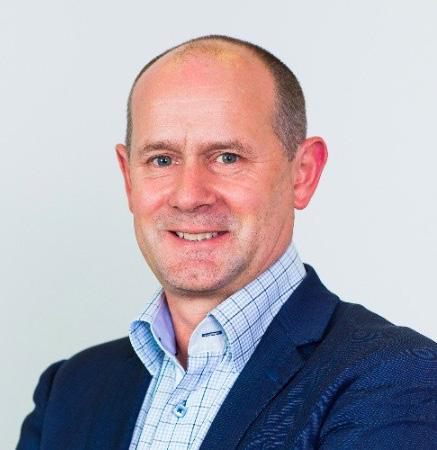
Lance Walker has been appointed chief executive of health insurer UniMed, New Zealand's third-largest health insurer with more than 140,000 members.
Walker brings 25 years of leadership experience across private, public and notfor-profit sectors, including eight years as a chief executive in life, health and travel insurance.
His previous role as chief executive of Accuro Health Insurance Society, which transferred its insurance portfolio to UniMed in 2024, gives him direct experience with the health insurance sector and membership-based mutual societies.
Chairman Peter Tynan said Walker is recognised for his ability to drive growth, lead cultural development and implement technology initiatives.
Walker said he was excited to "build on the foundation we established during the merger" and work with the team to "deliver exceptional value to our Members."
Walker is currently overseas and will start in October. Lynne Hayman will continue as interim CEO until then.
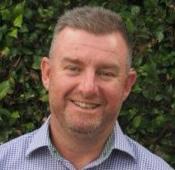
Stephen Potter has left his role as chief underwriter at AIA New Zealand after six and a half years.
Potter announced his departure on LinkedIn, saying he was taking time to "hang up the lanyard and take a bit of a breather" while considering his next career move.
Chief customer officer Maddison Sherlock said Potter's leadership and
expertise have left a "lasting legacy" and that AIA is "incredibly grateful" for his impact on the company and the life insurance industry.
AIA is recruiting for Potter's replacement. The role involves leading underwriting strategy, overseeing innovation initiatives, and working across business teams.
Sherlock said the company is looking for "an outstanding individual to step into this pivotal role, someone who brings deep technical insight, strong leadership, and a passion for delivering great outcomes for our customers and partners."
Nick Wells has joined the board of adviser co-operative Wealthpoint, replacing long-standing director David Gyde.
Wells is a Christchurch-based adviser and director of the Amicus Group. He is a former recipient of Wealthpoint's Adviser of the Year award and specialises in business and personal risk.
Gyde has stepped down after six years on the board, including four as Wealthpoint's inaugural chairman. He will remain with Wealthpoint as a financial adviser.
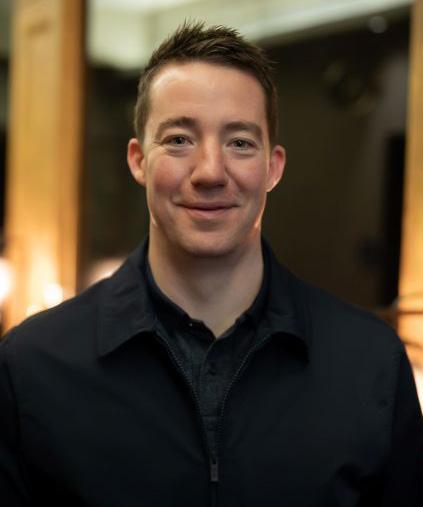
Current chairman Nigel Rukuwai said Wells brings "valuable experience from leading a successful advisory firm and a strong understanding of the challenges and opportunities facing advisers today."
Rukuwai said Gyde "was instrumental in establishing and growing the cooperative during its formative years" and "displayed exceptional leadership, particularly through the difficult Covid period."
Wells said Wealthpoint has "a clear strategy and ambitious growth plans" and he looks forward to contributing to its next development phase.
Wealthpoint is a co-operative of 160 advisers across more than 50 independent advisory businesses nationwide.. A


At PMG, sustainability is part of how we deliver long-term value for investors. By embedding environmental responsibility into every stage of our operations, we’re reducing emissions, improving efficiency, lowering costs, and strengthening our portfolio against future market and regulatory shifts.
If you’re looking to align your portfolio with long-term value and environmental responsibility, get in touch with the team to learn more about our approach and future investment opportunities.

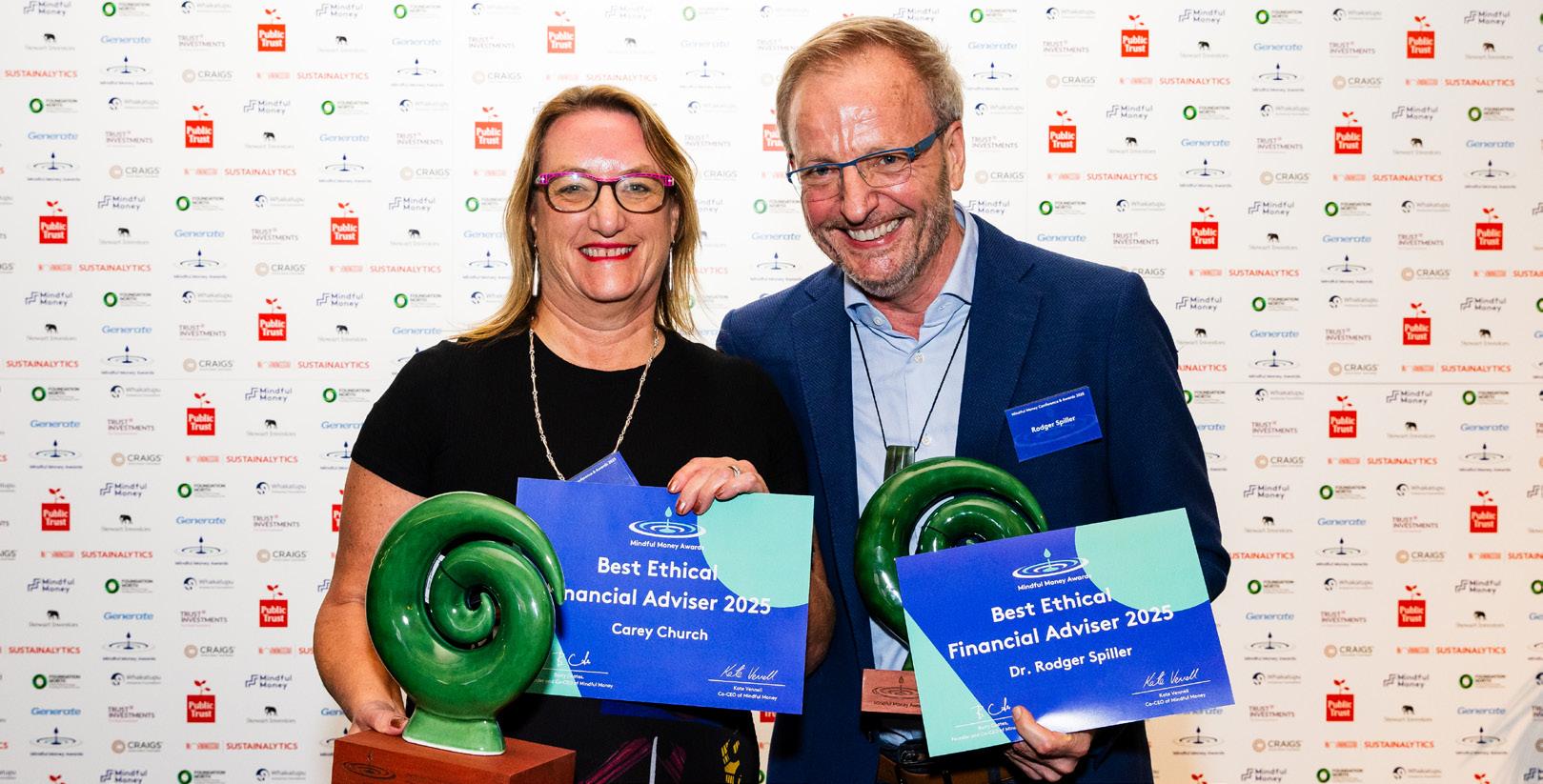
Mindful Money’s 5th annual ethical advice awards were handed out in Auckland recently.
The adviser of the year award was jointly taken out by former winners, Carey Church and Rodger Spiller.
Mindful Money founder Barry Coates says the awards celebrate outstanding
investors and individuals who have shown strong commitment and expertise in advancing sustainability and impact.
”The challenges of our time require re-orienting the flow of capital away from harm towards environmental regeneration, social equity and climate action. Our annual survey of the public
shows that consumers are on board,” he says.
Another regular winner was Pathfinder taking out the Best Ethical KiwiSaver Provider, and Best Ethical Investor awards.
Meanwhile, Australian Ethical was named Best Ethical Overseas Fund.


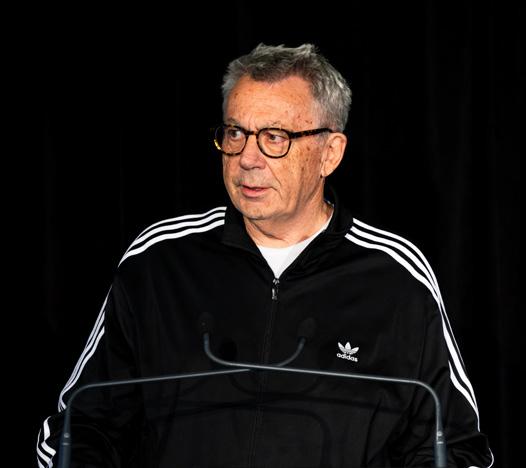







Maddie Sherlock and Alex Kühnast join Philip Macalister in the GRTV studio to discuss the latest from AIA and how artificial intelligence is shaping the business.
GRTV: MADDIE, LET’S START WITH YOU - WHAT ARE YOUR THOUGHTS AND INSIGHTS WHEN YOU CAME INTO THIS ROLE, AND HOW HAS IT BEEN?
Maddie Sherlock: I officially stepped into my role in January when Angela Busby moved into the chief distribution officer role. Since then I've spent some time on the road with our claims team, visiting some of our claimants and seeing our rehabilitation in action. I've also spent time on the road with our business development managers, seeing our advisers. I've been really interested in collecting information and understanding how my role can support our customers and advisors, and that's been really awesome.
GRTV: WHAT SORT OF FEEDBACK ARE YOU GETTING FROM ADVISERS AT THE MOMENT?
Maddie: One thing that's really important from a customer operations perspective is turnaround time. We know from some of the research that we did through Kantar that expectations are changing. Where customer's expectations sat around three to five days, customers are now expecting resolution within 24 hours. We are working to see what we can do to continue to meet customer expectations.
GRTV: DID YOU SPEND A BIT OF TIME WITH CLAIMANTS TOO?
Maddie: Absolutely, and I was really grateful that some of our claimants were open to me coming to the sessions with our claims managers. It was a really good experience to see the support that we
wrap around our claimants in their time of need.
GRTV: ALEX, COMING TO YOU. PRODUCT AND MARKETING IS YOUR GIG, CAN YOU GIVE ME YOUR THOUGHTS AROUND PRICING AND PRODUCT DEVELOPMENT? .
Alex Kühnast: Pricing is critical. People are under pressure and looking to save money where they can, so affordable options for customers is certainly front of mind. From our perspective, that means getting more offerings into market - both to provide advisers with products to sell, but also products that they need and value that give more options around affordability to manage premiums.
GRTV: CAN YOU TELL ME A BIT ABOUT PRODUCT DEVELOPMENT?
Alex: In the last quarter, we’ve managed to release a few good product enhancements into market. Namely the $10,000 health access option, which gives policy holders the opportunity to manage their premiums and retain their health cover. We've also recently released a critical conditions buyback enhancement, and that enables customers to consider whether it's right for them to buy back their trauma cover and replace their life cover at the point of claim - both unique in the New Zealand market.
GRTV: WAS THE BUYBACK QUITE POPULAR?
Alex: Certainly, and that's something that we've been listening to advisers about. I've also been having a good time meeting with a lot of advisers and getting their feedback, and they've really helped
us to identify where we need to focus our product development. .
GRTV: ARE YOU FINDING THOSE CHANGES ARE HELPING PEOPLE DEAL WITH THE COST OF LIVING ISSUE?
Alex: Yeah, certainly. It's quite well known that there are challenges in terms of premiums, but the options that we have been providing have been landing well, which is great.
GRTV: AND OF COURSE YOU HAVE YOUR FLAGSHIP PRODUCT, VITALITY. CAN YOU GIVE US AN UPDATE ON THAT ONE?
Alex: Yes, that's a personal favourite of mine. We currently have around 75,000 members on Vitality, which is a great jump from the previous numbers. That enables policy holders to not only get an upfront discount of 10%, but also further discounts through ongoing engagement. It’s not just a ‘set and forget’ - the more you interact, improve both your health and understand your health conditions, it enables you to unlock a premium discount of up to 20%. We also have a bunch of rewards for actions as well as pass-through benefits. Over the course of last year, we paid out over $14 million in rewards and that's excluding the premium discounts and pass-through benefits. I can give you an example - our average Platinum member who spends $138 a year to access the programme will return roughly around $1,100 in rewards.
GRTV: ARE YOU SEEING ANYTHING COMING THROUGH IN YOUR CLAIMS EXPERIENCE BECAUSE OF VITALITY?
Alex: We have seen this through some of our recent campaigns like the Mole
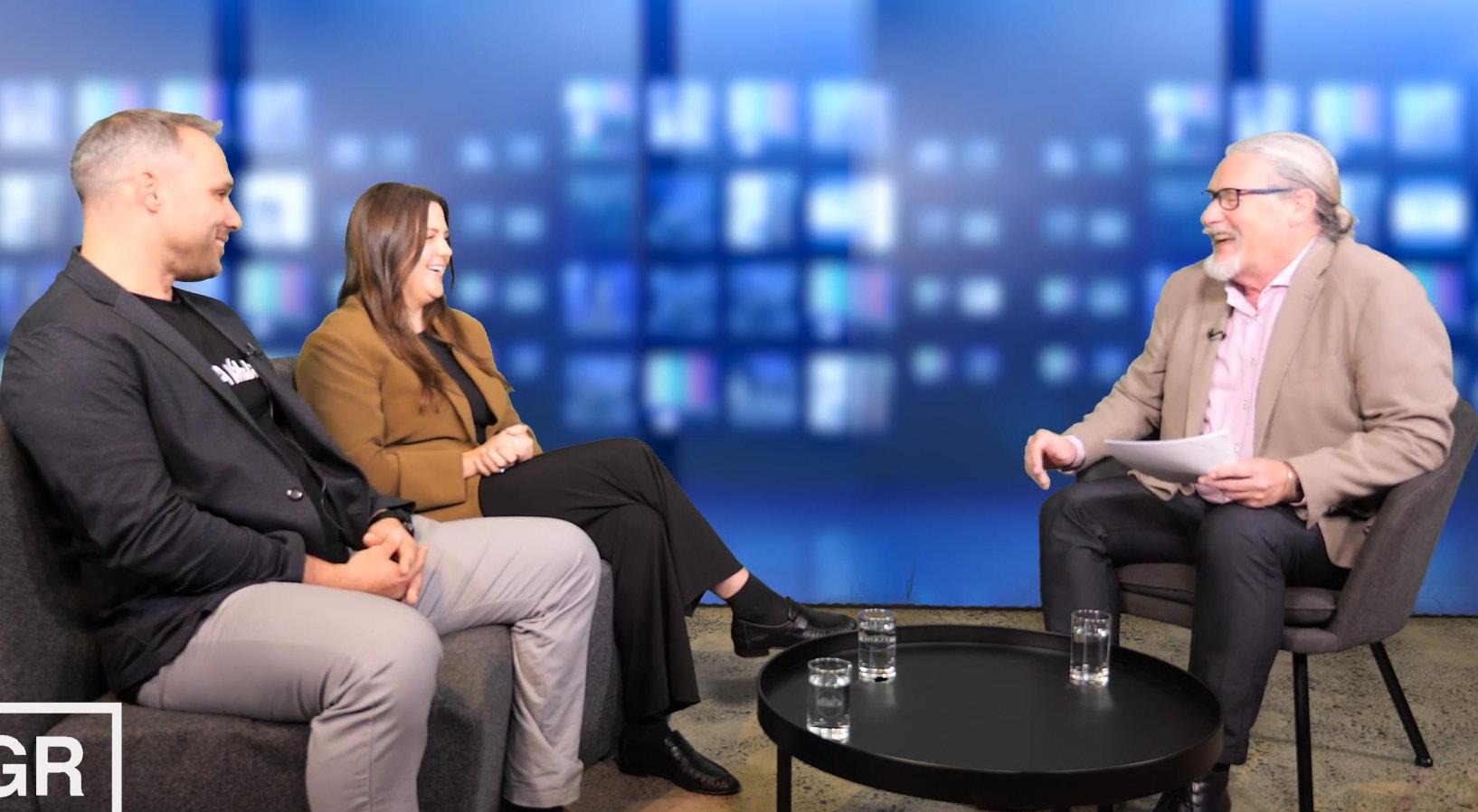
Map campaign, which we currently have in market again. Last year, we saw 111 malignant melanomas identified, and 254 pre-malignant. So that really helps policy holders to take action and improve their wellbeing.
GRTV: THAT’S A GREAT OUTCOME. NOW ONE OF MY FAVOURITE TOPICS - AI. MADDIE, CAN YOU TELL US WHAT AIA’S TAKE ON AI IS, WHERE YOU'RE HEADING AND HOW THAT WILL CHANGE THINGS, PARTICULARLY FOR ADVISERS?
Maddie: AI is moving incredibly quickly. As part of our contact centre transformation, we rolled out some AI use cases into our contact centre towards the beginning of the year. The intention was to look at how we can improve our processes so that our contact centre can be available to answer more calls and serve more customers. That includes things like call transcripts, call summarisation, etc. where that was previously all typed out manually by the team. Those processes are all being automated.
GRTV: IS THAT HELPING TO SPEED THINGS UP?
Maddie: Absolutely, yes. We are looking at establishing an AI team, and we have some good use cases in the pipeline. Things like automating pre-assessments, interactive chat bots, so customers and advisors can ask questions about customer policies and their attributes and get those answers straight away. For us, it's all to free up our most valuable resource, which is our people. Where there is that human interaction that's required, that's still there for them, but some of those lower level tasks can be self-served.
GRTV: AND WHERE DOES AI FIT INTO UNDERWRITING?
Maddie: From what we've seen globally, there's definitely opportunity to integrate AI within our underwriting practice. In some of our other markets with AIA, AI is being used to summarise medical notes, and to summarise documents for the underwriter to use in their assessment. When we look at our medical notes, some of them are a few hundred pages long. For us to condense that down into the most important information - that's time off the assessment, that's getting offer of terms out faster, that's getting customer certainty quicker.
GRTV: LOOKING AHEAD, WHAT CHALLENGES AND OPPORTUNITIES DO YOU SEE AHEAD, ALEX, AND HOW DO YOU THINK YOU'RE GOING TO TACKLE THOSE?
Maddie: We've already mentioned affordability, so our product pipeline for later this year will tackle some of those issues. We are looking to bring back a specialist and diagnostic testing product, which previously we've offered as a rider on our private health product alone. We’re now looking to bring that back on our wider offering as well. We’re also looking at a tiered trauma offering that pays out on severe events only, which hits a different price point and is a more affordable option.
GRTV: AND FOR YOU MADDIE? WHAT DO YOU SEE AS THE CHALLENGES AND OPPORTUNITIES?
Maddie: Well, Alex mentioned affordability for our health product. We are seeing significant increases in both
the volume and cost of procedures, so we introduced the role of healthcare partnership programme manager towards the beginning of the year. The intention of that role is to partner with health providers to help us secure better outcomes for our customers, and to manage costs so that it doesn’t flow through into premiums.
GRTV: WHAT ARE YOU EXCITED ABOUT FOR THE REST OF THE YEAR?
Maddie: The number one thing that I'm very excited about is digitising our customer communication. We've started with arrears and lapse letters, and we’re moving to anniversary letters in September. For us, that’s the foundation of continuous engagement with our customers to bring them relevant and timely information.
GRTV: AND FOR YOU, ALEX? ANY EXCITING THINGS?
Alex: There are some exciting happenings in the Vitality space. We've got our Mole Map campaign, which is currently live. We've recently had a Vitality health check campaign, which saw a 50% year-on-year uptick. We also saw some enhancements within the app, which was based on feedback we had received from customers. That includes being able to find a pharmacy and book an appointment immediately within the app. We are looking to continue that momentum and bringing back some familiar offerings, hopefully also towards the end of the year.
This transcript has been edited for brevity and clarity.

ASSET looks at how an adviser can build a portfolio based on responsible funds.
By Philip Macalister
Aquestion often asked is this: “Is it possible to build an ethical or responsible portfolio without sacrificing returns?”
One of the arguments advisers use for not adopting responsible investment portfolios is that it sacrifices returns. But there is now clear evidence that investing responsibly can be beneficial to investors.
Arguably, the poster child for this argument is New Zealand’s specialist ethical investing fund manager Pathfinder Asset Management.
Returns from Pathfinder's conservative and balanced funds have exceeded their Morningstar benchmark in the past five years with returns of 4.1% a year and 7.75% respectively compared with the Morningstar benchmarks of 2.6% and 7.66% respectively.
The company's growth fund has achieved annual returns of 9.43% over five years, short of the Morningstar benchmark return of 10.29%.
Responsible investing is now mainstream and not some niche, hippyish fad. There are a significant number of funds available in New Zealand that can be classified as “responsible” and the number keeps growing.
Indeed, one of the observations made when putting this feature together is that a significant number of funds ethical investment advisers use are mainstream funds used by advisers who are not adopting an ethical approach to portfolio management.
For this feature we wanted to demonstrate how an adviser can build ethical portfolios for clients. Our approach was to ask four of the top ethical advisers to provide us with their recommended fund lists. As part of this project we agreed not to identify advisers and their specific lists, rather we have aggregated them into one list.
There was commonality between advisers with managers and funds but equally some advisers had funds others didn’t use.
Our next step was to engage Chris Douglas at Mapua Wealth to evaluate the list. Douglas provided a breakdown of each fund.
“Responsible Investment is a broad church, “ he says. “Almost all funds now have some form of responsible investment approach, however, as always with investing, the devil is in the detail.”
A good example is global equity funds and the different approaches managers have taken to exclusions and even the threshold for including a sector.
He says the list of funds provided “didn't have any surprises”.
“All the funds you could term
‘responsible investments’, even the three fixed income funds termed ‘Not specifically RI fund though reasonably ethical’ stake up pretty well. They all have some exclusions, incorporate ESG into the process (aside from Simplicity NZ Bond) and would meet the standard of most investors.”
Mapua Wealth categorises the funds into three different approaches to responsible investing as follows:
• Light green: Index-aware with some exclusions, reduced carbon footprint and ESG integration
• Positive bias: Highly active, focusing on a broad range of thematics and alignment with UN Sustainable Development Goal
• Green thematic: Funds focusing on one thematic such as climate change, renewable energy and water.
Douglas observes the advisers take different approaches. Two of them have a greater focus on the Positive Bias funds, while the other two have a mixture, including the Light Green funds.
“When it comes to good portfolio construction, it's difficult to build a portfolio with only Positive Bias funds, many of those funds have suffered relatively poor returns over the last few years, especially if their approach has led to a small/mid-cap growth bias,” he says.
“So, you need to be aware of your biases and I would argue that it's good to have a few Light Green exposures to ensure you have a well-diversified portfolio.”
Douglas says investment focus has only recently turned to fixed income, with most advisers adopting an SRI/Ethical framework to their equities first.
Rodger Spiller could well be called the godfather of ethical investing in New Zealand. His journey down this path began way back in 1983 when he graduated from university and won an accounting for a paper he did on corporate social responsibility.
He laments the dearth of advisers who have embraced ethical investing and thinks for many “it just goes in the too hard basket.”
“There's a lot on any adviser's plate these days, and the necessity to avoid greenwashing to avoid being inauthentic is increasingly in the spotlight.
“So if an adviser's going to offer a solution in this space, they need to demonstrate that they've done the study, they've done the research, and they can
Alphinity Sustainable Share Fund
Amova NZ Bond Fund
Amova NZ Corporate Bond Fund
Artesian Green & Sustainable Bond Fund
Australian Ethical Australian WS
Australian Ethical International Share Fund
BetaShares Australian Sustainability
BetaShares Global Sustainability Leaders Fund
Booster Socially Responsible Investment
KiwiSaver
Coolabah Short Term Income Fund
Devon Global Impact Bond Fund
Dimensional Australian Sustainability PIE Fund
Dimensional Global Sustainability
Evidential STFF
Federation Alternative Investments
First Sentier Responsible Listed Infrastructure Fund
GMO Climate Change Trust
Harbour Australasian Equity Fund
Harbour Australasian Equity Income Fund
Harbour NZ Corporate Bond Fund
Harbour Sustainable Impact Fund
Harbour Sustainable NZ Shares Fund
Impax Sustainable Leaders Fund
Kernel Global ESG Fund
Funds ethical investment advisers use This
Kernel Global Green Property Fund
Kernel Global Infrastructure
Kernel S&P Global Clean Energy Fund
Kernel Wealth NZ Commercial Property Fund
Mint NZ SRI Equity Fund
Nanuk New World Fund
Pathfinder Ethical Trans-Tasman Fund
Pathfinder Global Green Bond Fund
Pathfinder Global Responsibility Fund
Pathfinder Global Water Fund
Pathfinder KiwiSaver
Pengana Emerging Companies
Pengana WHEB
Perennial Better Future
Schroder Global Sustainability Fund
Schroders Specialist Private Equity Fund
Simplicity Global Equity
Simplicity NZ Bond Fund
Simplicity NZ equity
Stewart Investors Leaders Sustainability Fund
‘Responsible Investment is a broad church. Almost all funds now have some form of responsible investment approach, however, as always with investing, the devil is in the detail.’
Chris Douglas
understand the difference between the different levels of ethical investment offerings,” he says.
“We know there's quite a range from what I call ethical strong to medium to light. And for many advisers getting their heads around the education, the research, the insights that's required is a step too far.
“But I really encourage everyone to do that. It's obviously on the one hand, essential because if you say you got to know your client and you've got to meet the client's needs, if you don't ask them about their ethical concerns and their values, then how can you say that you know your client and that you're meeting their needs?”
Spiller believes the demographics point towards there being a real, and growing demand for ethical advice. Research shows there's going to be a massive transfer of wealth from the older to younger generations.
“Many younger people, they do have these ethical values. They do want to ensure that the money they're receiving is invested that way. So right across
the demographics from grandparents to parents to children and even grandchildren, what we're seeing is there's this conversation going on about what kind of world do we want to be living in and making sure our money is aligned with that,” he says.
“So I'd encourage advisers to really get into it.”
Carey Church says the epiphany that resulted in her becoming a specialist ethical investment adviser was that “for two years all our new clients were asking for ethical investing. It reflected our personal values and with Mindful Money research we could have a genuine approach to help people understand investing that reflects their values.”
Her approach to ethical investing can best be described as a full on one.
As an adviser with many years’ experience she was trained, and still believes, in active management.
But that doesn’t exclude passive funds. She has four passive funds which she calls “defined index funds” in her portfolio.
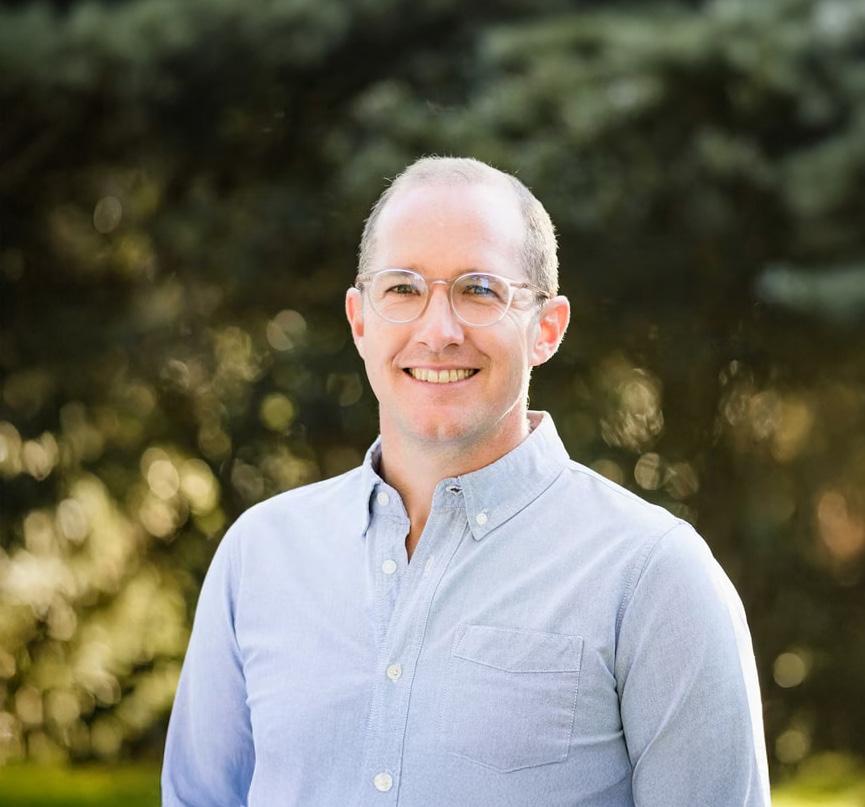
Three are from Betashares and one from Kernel.
These funds, she says, work within strict frameworks.
“They are not going to go outside of their constraints.”
Church’s approach is really a deep dive into ethical investing as has been acknowledged in the Mindful Money awards.
Back in 2020 she and others in her business completed the PRI Diploma in responsible investing.
That led to a full review of their existing fund managers. This process was deep and detailed including reviewing all the publicly available information, sending questionnaires to managers and requesting one-on-one meetings.
The whole process took more than a year to complete and threw up some interesting observations. Amongst these were that Australian managers were far more open than their New Zealand peers and many already had material available which answered their questions.
This demonstrated that Australia is more advanced in ethical investing than

New Zealand, she says.
Likewise, some managers opened them with open arms and full transparency and others treated them appallingly and refused to provide information or answer questions.
“It really showed the gap between Australian and New Zealand fund managers,” she says.
In many ways Church and MoneyWorks have become specialist researchers in ethical funds.
It’s not a technical term, but it is one Church uses a lot, avoiding nasties.
It is a nice way of talking to clients about what is, in industry jargon, negative screening.
Church has six types of “Nasties” and these are the same as what Mindful Money uses (she buys Mindful Money research and gets the charity to research funds).
The six nasties are:
1. Environmental destruction
2. Human Rights violations
3. Weapons
4. Social harm
5. Fossil fuels
6. Animal cruelty
Perhaps the most complex is social harm which can cover things like; gambling, alcohol, pornography, tobacco etc.
Some clients suggest it is hypocritical to exclude alcohol when they enjoy a wine with dinner, or a beer in summer at the beach. Or maybe they like buying a Lotto ticket every now and then.
This leads to an important aspect of ethical investing, getting know your client.
Getting to know your client is a
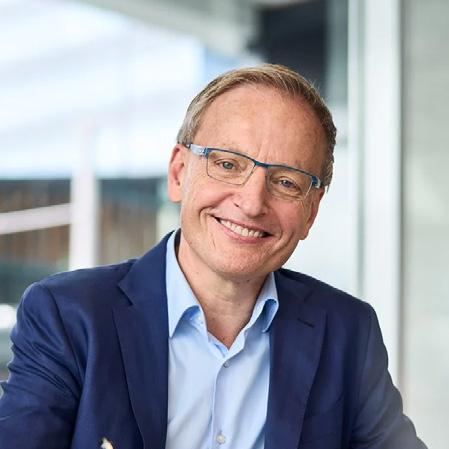
fundamental part of ethical investing and in some jurisdictions is built into regulations.
This may surprise some advisers, but Church says: “it is impossible to avoid nasties.”
The challenge is to identify them and make sure the client knows about them.
A great anecdote she provides is around a client who wanted no weapons in her portfolio.
The client had around 0.5% of her portfolio exposed to weapons. Church explained why this was the case and what it meant for the portfolio and why they were there.
In the end the client wanted 0%, so that is what she got.
“It’s really about education and talking,” Church says.
She tells clients how much they may have exposed to nasties and asks: “How do you feel about that?”
This is nearly the easiest part for Church and she uses three managers:
• Artesian
• Harbour
• Amova (formerly Nikko AM).
Artesian is an Australian manager distributed by Devon in New Zealand and is, in her view, “the gold standard.”
Harbour has great ethical credentials but does not rely on them for marketing purposes.
Over the years we have written about Harbour and its approach to investment management. It screens all listed New Zealand companies against a proprietary questionnaire asking questions about sustainability and how they manage various issues.
When the results of this screening
Why fixed income is the quiet powerhouse of ESG investing
At Trust Investments, we’ve spent nearly 25 years building a reputation in New Zealand for institutional-grade investment solutions grounded in trust, scale, and purpose.
At Trust Investments, we’ve spent nearly 25 years building a reputation in New Zealand for institutional-grade investment solutions grounded in trust, scale, and purpose.
Our mission is simple: deliver strong financial outcomes while doing good. That ethos is at the heart of the Trust Management ESG International Bond Fund, recently relaunched in conjunction with global sustainable investing leader Nuveen.
“At its core, this is a global fixed interest strategy designed to deliver strong returns - first and foremost relative to the global aggregate bond universe. What makes it different is that it also has sustainable features as a key strategic objective” said Matthew Goldsack, General Manager Investments at Trust Investments. “The fund allocates around 40% of assets to securities with measurable positive impact, targeting outcomes that benefit society and the environment”, Goldsack said.
Why fixed income? Because the biggest lever for change isn’t always equity. In 2024, global sustainable bond issuance exceeded US$1 trillion, up 20% year-onyear. Cumulative issuance since 2018 has surpassed US$4 trillion, with green bonds leading the charge. Bloomberg Intelligence projects ESG assets to reach US$40 trillion by 2030, with fixed income playing a central role.
While some institutional managers are retreating from ESG commitments, Trust Investments is doubling down. Businesses increasingly recognise that transitioning to cleaner, more efficient operations isn’t just ethical - it’s financially sound. The demand for sustainable debt structures continues to grow, driven by investor appetite and the need to fund real-world solutions.
“Nuveen’s impact platform alone manages US$10.3 billion in fixed income securities targeting affordable housing, climate resilience, and natural resource protection”, Goldsack said.
The Trust Investments ESG International Bond Fund is built for advisers and investors who want to align portfolios with purpose - without compromising performance. It’s about investing in a future that works - for markets, for people, and for the planet.
Learn more at www.trustinvestments.co.nz
are put against performance there is clear evidence that companies which embrace sustainability outperform those who don’t.
Church is open to looking at new funds when they come to market, like Nuveen, which Trust Investments is distributing in New Zealand. (See sidebar).
However, like all the other managers and funds Church uses, it must go through her rigorous research process.
This, she says, may take a year.
KiwiSaver
Church says KiwiSaver is a problem area as it is very hard to get information from managers, with the exception of Pathfinder – who, as you would expect, is very open and transparent.
She uses two other managers and has dumped others as her view is they didn’t walk the talk. What they put on the tin was very hard to prove.
In her view KiwiSaver has become a big marketing exercise by fund managers to hoover up funds, rather than something based on investment management.
Peter Lee
Peter Lee is also a previous Mindful Money Ethical Adviser of the Year Award winner and, like Church, his decision to go down this route is personal.
“It's a combination of us as individuals, and what we saw as a real need in the world.
All of us at the firm are driven by a strong desire to help make the world a better place, knowing that finance and money can be a force for good.
“We want our
children to live in a more sustainable society,” he says.
“It's clear from research, such as the annual surveys by Mindful Money and RIAA, there is a huge demand for investments that don't compromise society or the environment, and also help to create that sustainable future.
“Our own experience is exactly the same – clients really do want to take care with how they invest. For example, three quarters of all New Zealanders want to avoid investments that have negative impacts. By offering ethical investment advice, we help bridge the gap between desire and opportunity.”
Lee reinforces the view that ethical investing is not all that different from what most advisers do anyway.
“At its heart, our process is little different to that of any good advisory firm, just with a few more questions asked around values/beliefs and preferences.
“We have a series of model portfolios, as this is generally the best way to meet the needs of most investors. Over time, we have optimised the portfolios in conjunction with our research house, to find the best and most optimal balance between diversification, efficiency, cost and good ethical outcomes.
“It also means we can meet the needs of more clients than we could if we try to individually tailor to each individual client.”
“We have found there are two broad types of client which you could loosely categorise as ‘light green’ and ‘dark green’and we have a series of portfolios for each.”

The “lighter green” portfolios are largely based on negative screening, which works for a large proportion of his clients. The “dark green” portfolios are designed for clients who want to favour sustainabilityfocused companies, themes, or bonds as well as avoiding certain industries.
“On top of that, we can cater for those who have a stronger interest in one or more themes through a core/satellite approach, preserving the integrity of the main portfolio,” he says.
Lee takes a different approach to investing, compared to Church, which demonstrates that ethical investing is flexible.
“Our house view is that markets are generally efficient and that, in the long run, despite the additional management fees, it is difficult for active managers to consistently outperform relevant benchmarks.
“Our models are all built on index/rulesbased funds as their core - this meets the needs of our investors for strong ethical criteria while remaining evidence based. We tweak the Sustainable Plus series to allow some active funds so that we can favour certain themes or types of investment and not merely avoid.
“This is done at strategy level, not client level. It suits clients who are comfortable with a slightly higher overall portfolio cost and slightly reduced diversification. Because those active funds are not a large percentage of the portfolio, we still keep the average cost low.”
Like Church, Lee says a key part of the process is the fact find. He follows the same six-step process most advisers do.
“The extra step we bring in is through an ethical preference questionnaire. That helps identify the areas of most concern that the client wants to avoid, but also areas they may want to favour. The relative strength of these, together with our interactions with clients, gives us a very good indication as to which of the two main model portfolio options is likely to be the best for the client.”
Lee notes the menu of funds he can use is evolving. In the past year a number of new PIE funds from Australian managers have come to market which has improved tax efficiencies for most investors.
“Changes in our approved product list are revolving around new thematic funds, such as funds with a stronger social impact, specialist water funds and private equity with environment/social themes.”
“Most of our funds would also be ones other advisers might use as they will have a good track record, be well-diversified and reasonable costs. More specialist
‘At its heart, our process is little different to that of any good advisory firm, just with a few more questions asked around values/ beliefs and preferences.’
Peter Lee
funds include the GMO Climate Change Fund, given its focus is of significant concern to many of our clients. A rather different fund that we are bringing on is the Federation Alternative Investments II Fund, which is in essence a private equity fund with some liquidity.
“While not specifically promoted as an ethical fund, it has the hallmarks of a good responsible fund, is targeting companies that are making a sustainable difference, and is RIAA Certified. It caters well for clients with a higher risk profile as part of a core/ satellite approach.”
Fixed interest is almost always via bond funds. “We have specific allocations to New Zealand and global bonds, including using Artesian’s Green and Sustainable Bond fund. We see the emergence of new bond funds such as Blue/Green bond funds.”
The big question: How’s performance?
Church has done some back testing of portfolios but came to the conclusion that it was meaningless as she was testing her old portfolios from years ago when things were different to current portfolios in today’s environment.
But one observation she made from her research is that the older (pre-

‘It’s really about education and talking.’
Carey Church
2010) portfolios did better, but as time has moved on and ethical investment management and funds available has changed, the newer ethical portfolios had proven to be better performers.
Lee says a good example of performance “would be our Sustainable Balanced portfolio, based on index/rules-based funds, and with many clients invesed.”
The five-year return to June 30, 2025 was 7.6% annually (net of management fees but before tax), compared to the benchmark 7.1% annually and peer group average of 6.1% annually. (The performance start date was 1 July 2021 so the 5-year return includes a calculated backdated return for the first year).
It’s not that hard to be good
Investors are wanting ethical portfolios and demographics suggest that there will be a growing demand.
Advisers who have embraced ethical investing have grown successful businesses. They have shown that being ethical isn’t too much different from mainstream advice.
The funds used are largely the same, with some specialist funds thrown in. A key difference is the fact find builds a stronger relationship with clients, and arguably one which has longevity.
Advisers in this area may know their clients better than those who are not asking questions about values and ethics. Knowing your client is a fundamental part of financial advice and ethical investing unlocks this.
As for the hoary old chestnut, investment performance; this has well and truly been cracked. A

• Over 5 decades of
By William Fletcher, Portfolio Manager – Alternative Investments at Fisher Funds
The combination of private markets and responsible investing is a win-win proposition. Responsible investing and corporate engagement are important in both public and private markets and while it can be challenging for KiwiSaver providers to have meaningful influence in large public markets companies, private market investments offer greater potential for impact.
Responsible investing has been a key part of the Fisher Funds’ investment process for many years. We think about responsible investing as a three-pronged approach: avoid the bad, embrace the good and promote positive change.
When evaluating new investments, we develop a thorough understanding of how a company works with its stakeholders, treats the environment, and manages its governance responsibilities. This helps us to build a holistic responsible investing perspective which is incorporated in our investment decision-making process.
Fisher Funds is actively growing its private markets allocation, with additional investments planned in private equity and private credit in our KiwiSaver schemes over the coming years. We believe this will assist in maximising long-term returns for clients, accessing global opportunities for wealth creation and backing successful New Zealand businesses.
Responsible investing is equally as relevant in private markets investments as it is in public markets. Private capital is often new capital into a company to directly support its growth initiatives. This is not always the case in public markets where shares are typically purchased from other shareholders or debt is being refinanced. In fact, private markets potentially present the opportunity to make even more impact from a responsible investing perspective over time. Lodestone Energy and Kaweka Hospital are great examples of this.
Lodestone Energy was founded in 2019 to pioneer the development of utility
scale solar in New Zealand. The company now has three operational solar farms generating enough energy to power over 50,000 homes, with two further farms under construction and further projects in the pipeline around the country. Fisher Funds invested in Lodestone to help fund these developments.
Lodestone’s solar farms play a critical role in the decarbonisation of the economy and in supporting regional New Zealand. The agrivoltaic design is a first for New Zealand, where the land is used for both solar generation and agriculture, which maximises the production of electricity while maintaining productive farming.
The move away from fossil fuels is going to be a complex transition for society to manage. It poses risks, but it also creates opportunities – particularly for investors.
Fisher Funds’ investment in Lodestone is a great example of KiwiSaver money supporting growth in the New Zealand economy and the decarbonisation transition while also delivering return on investment.
Hawke’s Bay has been experiencing a shortage of healthcare infrastructure for many years. Kaweka Hospital is a new private facility in Hastings, with over 8,000sqm of clinical space, adding significant capacity to the Hawke’s Bay healthcare system.
Fisher Funds supported the stage two development of the project through private credit funding, and alongside other funding partners, helped make this muchneeded project a reality.
The hospital is expected to accommodate 5,000 surgeries per year and offers over 20 specialisations.
Kaweka’s location next to Hawke’s Bay Hospital allows it to work as a key supplier of elective healthcare to Te Whatu Ora, easing pressure on the public system.
Kaweka is Hawke’s Bay’s first 4 Star Green Star healthcare facility and its first base-isolated facility that will be 100% New Building Standard rated.
Kaweka is another great example of KiwiSaver money being used to support regional social infrastructure while delivering a strong return on investment at the same time. A
We believe that Lodestone and Kaweka are win-win situations all round. As KiwiSaver grows and more capital flows into private markets, we believe we will see similar investments across the responsible investing spectrum.



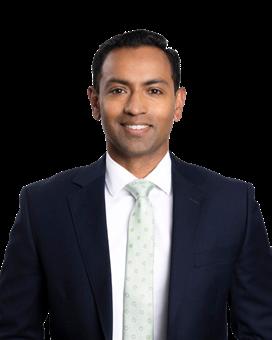


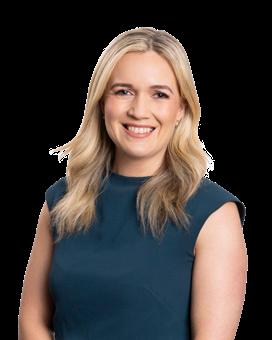
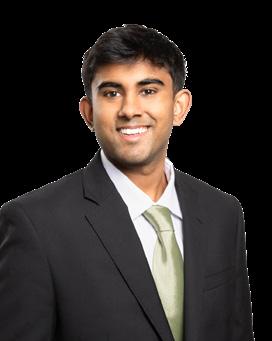

Advisers from more than 80 countries belong to the Million Dollar Round Table, a global association of financial-services professionals. Their annual conference, held this year in Miami, is truly something else.
An essay by Philip Macalister
This year was my fifth trip to an MDRT conference, and this time I wanted to describe it in an essay.
One of the first things which strikes you is the sheer size and scale of a Million Dollar Round Table (MDRT) annual conference. And this year was a relatively small one, with 5,700 advisers.
You get an inkling of the size when you arrive at the Miami Convention Centre. It’s a mammoth building.
For anyone wanting to do 10,000 steps a day, it’s highly achievable in a venue like this.
Entering into the main platform room - if you could call it a room - gives you a taste of the vibe of an MDRT meeting.
Volunteers line the entrance clapping, cheering and high-fiving everyone who comes in.
The Mexicans seemed to be particularly enthusiastic this year!
You can tell how much being an MDRT member means to those who make this annual pilgrimage.
They’re terribly proud. They literally wear MDRT on their clothing.
The venue is decked out in dozens and dozens of MDRT logos, badges, flags and installations. I do love the MDRT branding on the stairs – a main focal point for country group team photos.
To us reserved Kiwis, it is rather odd seeing exuberant adviser after adviser posing in front of these MDRT symbols, showing how proud they are of belonging to this global family.
But so, they should be proud. They must qualify, based on achieving various levels of commission each year.
There are various earnings levels to achieve full membership and the most common one used in New Zealand is the requirement to write $114,000 in new business commission in a 12 month period.
It’s also not an insignificant cost for many to get to Miami, with entry fees, airfares and accommodation.
Once on the ground, for New Zealanders the ‘Kiwi peso’ seems adept. Nothing is cheap (NZ$500-600 a night for a room isn’t unusual).
And then there are all the taxes and tips. You look at something like a cocktail –which of course you have to have in Miami – and think US$15-16 is ok.
But the real cost turns out to be closer to US$22. Ouch. (Enjoy slowly).
Working out the logistics of four days of conference can prove to be a challenge. Even after five trips, I still haven’t mastered this perfectly.
MDRT is made up of three types of sessions.
The main platform sessions – which can run for three or four hours – have some of the best keynote speakers in the world. It must cost a fortune to get them all in the room.
They’re astonishingly good, and all of them tell powerful stories.
I’m not going to cover all of them, but a little further on I will highlight two.
Then there are the Focus sessions. These are hour-long deep dives into all sorts of topics, from ethics to AI, to sales and so on.
The third part is what they call the ConneXion Zone. These are short, sharp, punchy 20-minute sessions, with four running at a time.
I haven’t countered how many are presented over the duration of the conference, but it would be well over 100.
They cover all sorts of topics, in many languages.
Some are main-platform speakers doing a deep dive. Some are tailored for specific audiences based on language.
There are also a host of other events, such as special lunches, for which you have to buy separate tickets.
MDRT has its general membership, but has two additional membership levels for top producers.
These are Court of the Table (COT) and Top of the Table (TOT). Sort of like being
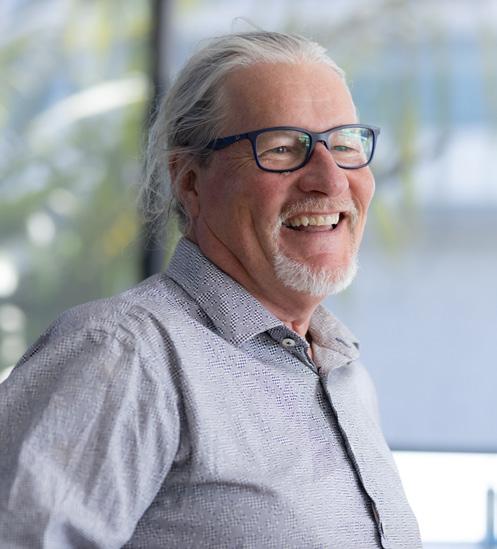
a Koru member with Air New Zealand, where there is Gold and Elite.
TOT and COT have their own events with special speakers.
What
What makes MDRT different? That’s always an interesting question to try and answer.
I’ve talked about the size and scale, but there are other things, too.
Something which our regulators probably would not like is how often advisers get on stage and espouse how proud they are to sell life insurance. It’s a refrain heard many times.
But it’s not just about sales. It’s about helping protect people.
As an aside, of the 95,000 advisers who belong to MDRT, I am told the split is about 50:50 between risk advisers and financial planners.
Many of the speakers are Certified Financial Planner (CFP) cardholders.
Big voices I said I would come back to a couple of the main speakers.
The first dude I want to mention - and he is a dude - was a nine-year NFL player Justin Forsett.
.On the field, he was known for his speed and agility.
Off it, he has become known for his leadership skills.
Seeing this hulk crammed into a blue suit a few sizes too small really emphasises the bulk of the man.
But it’s his booming voice and stories of sacrifice, success and setbacks which stand out.
I’m going to leave you with some bullet points rather than try and tell his story (as that’s really up to him).
These snippets, in themselves, should make you think:
• Greatness grows best in the shadows
• Excel at controllables
• If you aim at nothing, you will hit it every time
‘Some think it’s a bit happy clappy. A bit of a cult. In some ways, that’s the beauty of it. It ain’t a staid, boring, old event’
Philip Macalister
Hear from accomplished MDRT members as they share their personal journeys and how MDRT has leveled up their careers and lives.

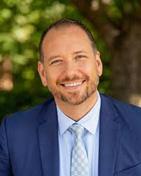

A seasoned US financial adviser, bestselling author, and international speaker He serves as Secretary of the MDRT Foundation and leads the global MDRT Academy Taskforce, bringing a wealth of experience and insight to the financial services industry.
Ross Vanderwolf, CFP, of Brisbane, Queensland, Australia, is a 38-year MDRT member with 10 Court of the Table and 14 Top of the Table qualifications In recognition of his longstanding volunteer involvement and contributions, Ross was invited to join the MDRT Executive Committee in 2015 and served as the MDRT President in 2019. Ross has spoken regularly at MDRT events globally on subjects ranging from leadership, mentoring, and overcoming adversity while building a successful business. Ross has also had a long association with the MDRT Foundation – MDRT’s charitable arm, he is an Excalibur Knight of the Foundation (in acknowledgement of his charitable giving) and has served as a Trustee since leaving MDRT’s Executive Committee
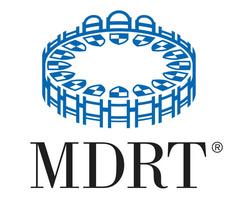


• Visualisation
• Boxes are for things, not people (don’t be placed in box)
• Warning, encouragement, instruction
• Serve. Serving is the currency to elevation. Impact. Ability to change lives.
• Too big to serve then you’re too small to lead
• Everyone wants a breakthrough but doesn’t want to be broken
• Your best ability is availability.
He finished by booming out the mantra, “I can, I will, I shall”. It’s still ringing in my ears.
Cornerstone of goodness
A cornerstone of MDRT is its ‘Whole Person Concept’.
Here are the ‘seven pillars’ of the notion:
• Robust, healthy lifestyle Members strive to maintain a sound and balanced mind and body through lifestyle choices, improving the quality of their life and a more productive business.
• Strong, fulfilling relationships MDRT members make it a priority to spend meaningful time with family and friends so that they can build relationships based on sharing, love, mutual respect and openness.
• Intellectual development Intellectual curiosity is a core value of every MDRT member. They
believe in the power of lifelong learning and actively seek the growth it provides.
• Career success and growth No matter the pace, forward momentum will lead to accomplishing goals.
• Financial security MDRT members lead by example. They follow the advice they give to their clients and take steps to nurture their own financial security.

every MDRT member strives. This focus - on work-life balance and being a good person - is something which differentiates MDRT from other professional associations. Giving
Giving is big for MDRT and is a natural extension of the Whole Person Concept. MDRT runs a foundation which supports many causes around the world.
At this year’s conference, it was global
‘I definitely have a greater appreciation of why you are so passionate about MDRT’
Craig Wagstaff
• Spiritual and personal values
MDRT members align their work with their values and spiritual beliefs. They find long-term meaning and purpose by cultivating these facets of their lives to grow toward greater fulfilment.
• Commitment to community service
Providing service to others and being a positive influence on the community is something for which
non-profit organisation Seva – pronounced ‘say-va’ - which is a bit like the Fred Hollows Foundation, supporting the restoration of sight for people in Third World countries.
Astoundingly, advisers donated US$264,323 over the course of the conference.
And this year the amount was dollar-matched, bringing the total to US$528,646 (around NZ$880,000).
That is extraordinarily generous.
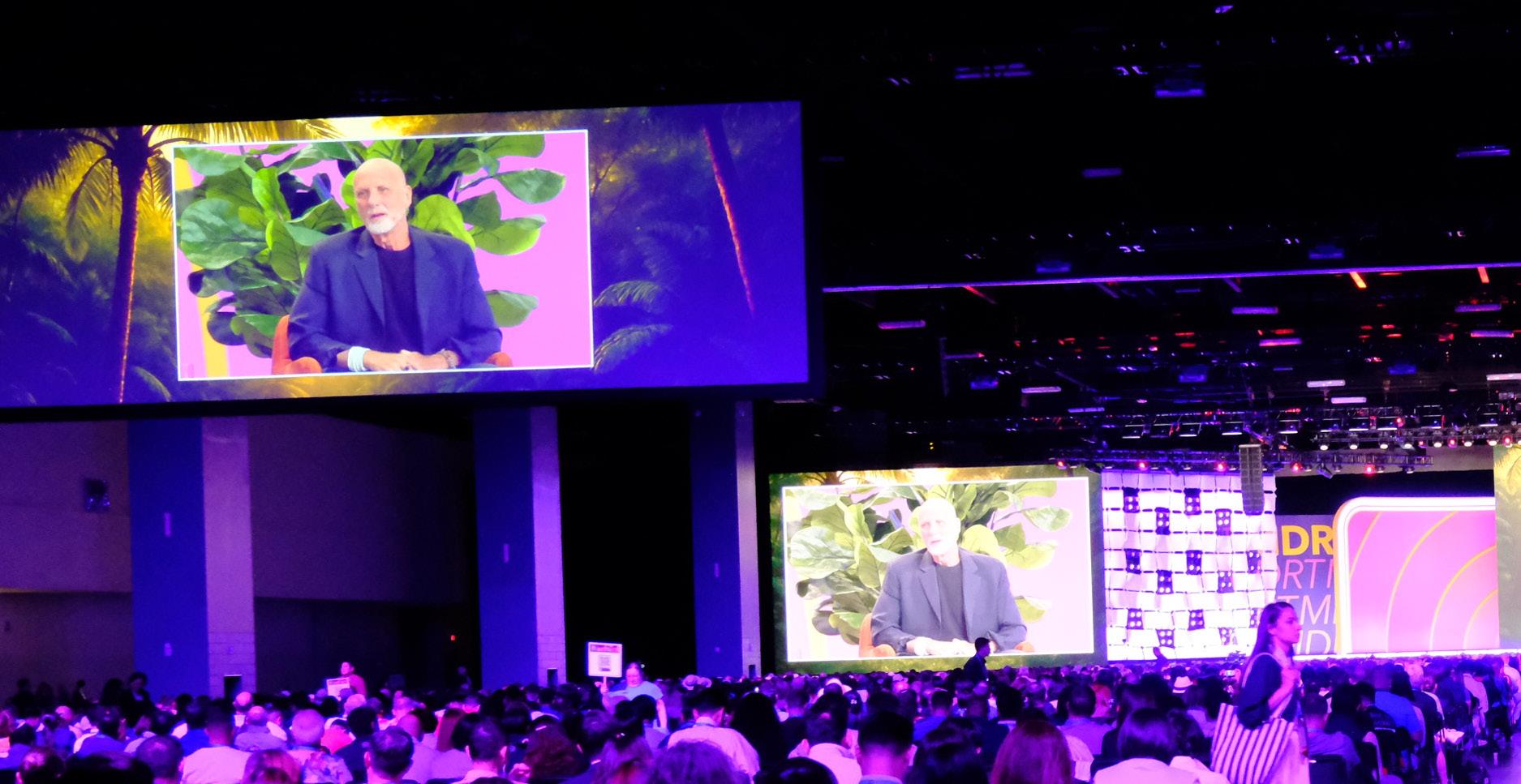
I’d like to tell the MDRT family story in two ways.
The first is a New Zealand angle. Amongst this year’s delegates were mother and daughter, Katrina Church and Jess Marwick, and father-son duo, Ian and Lee Jordan.
You can read see their stories on page XX.
My second illustration, from one of the main platform sessions, is about an American member, Steve Plewes, and his wife, who flew to Australia for a vacation (since they are Americans, it has to be a ‘vacation’).
Early on in the trip, they were in an horrific car accident, with the husband sustaining multiple broken bones and a punctured lung.
Plewes and his wife ended up being sent to different hospitals.
Once day, the nurse said to him, “You have visitors”. Perplexed, he replied that he didn’t know anyone in Australia.
It turns out a group of MDRT members had learnt that one of their adviser-family
‘I can, I will, I shall. It’s still ringing in my ears’ Philip Macalister
members from the US was in hospital.
Led by current MDRT Australia chairman Nick Longo, they ended up caring for the couple while they recovered.
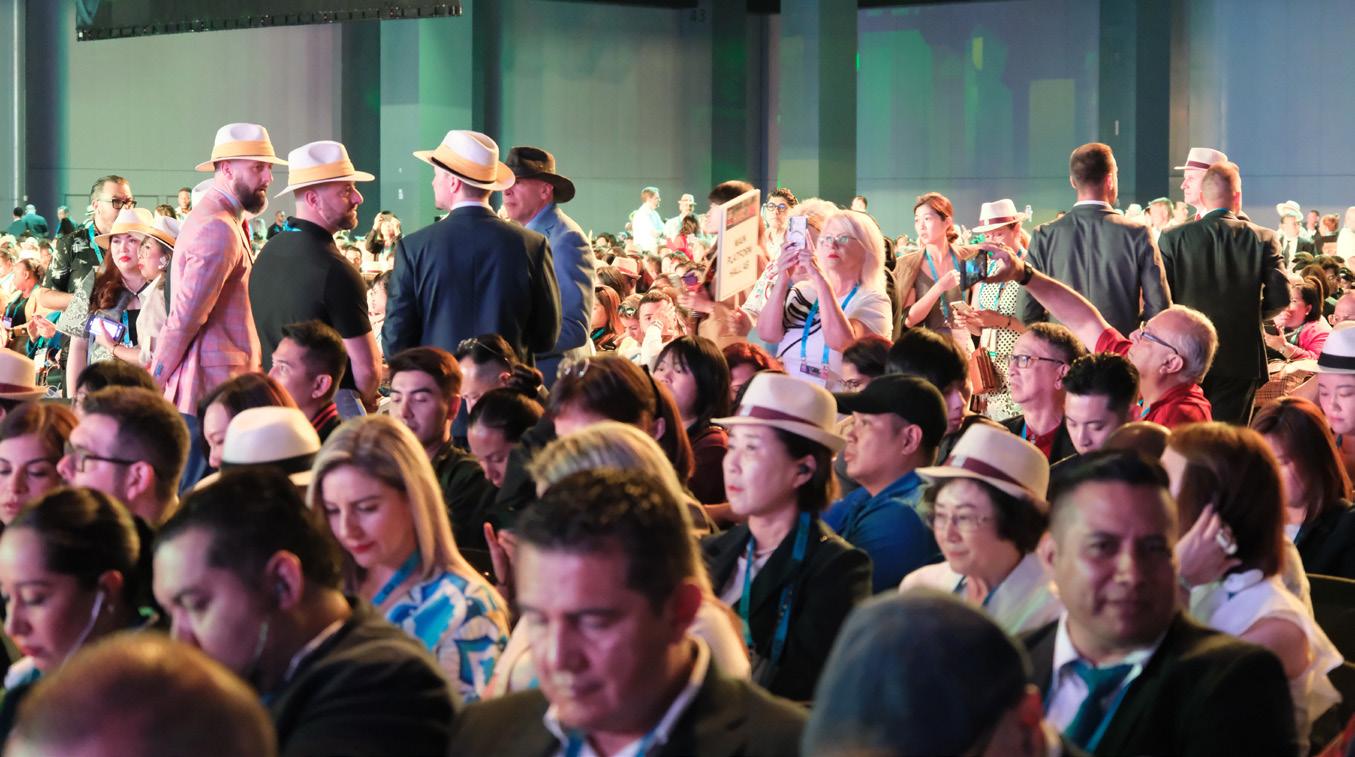
“It was an act of selflessness I might not experience again in my life,” Plewes told a packed hall.
“MDRT is a group of people to work to grow together. We are a community.”
He went on to say it’s “not how MDRT speaks but acts.”
“My story is why MDRT relationships are so special.
“You are part of a community who chooses to grow together…step up, make a difference in people’s lives.”
From a Kiwi perspective, this comment from Katrina Church on the group’s WhatsApp channel is a lovely summation of the vibe of the 2025 event:
“I just wanted to thank you all for making this MDRT a special one.
“Kiwis always create a special group of people around us. That always come to laugh and celebrate.
“For our first-timers, we hope that you can see a new world where dreams can be a reality while creating a wonderful world around you.”
One of the nice things about MDRT is that there are “Special Guests” at the event.
For the New Zealand arm, these are representatives from various insurance companies.
In Miami, we had people from AIA, Asteron, Chubb, Fidelity Life and Partners Life.
Again, I’ll use their words.
Fidelity Life Head of Individual Life Craig Wagstaff said, “The conference has been rich in inspiring speakers, information and great tips and tricks.
‘It’s an opportunity to get away from the hustle and bustle of day-to-day advice, and network with a bunch of some of the best advisers in New Zealand’ Philip Macalister

“I definitely have a greater appreciation of why you are so passionate about MDRT.”
The ‘vollies’
Something I have not experienced, but hear so much about, is that MDRT encourages members to be volunteers and help at the venue.
Special members get to be ‘speaker liaisons’, looking after keynote speakers and enjoying one-on-one time with them.
How cool is that?
Christchurch-based MDRT country chairman Travis Hamilton was lucky enough to be Speaker Liaison for Israeli speaker Yossi Ghinsberg, an adventurer, author, humanitarian and motivational speaker.
Ghinsberg told his extraordinary story of being lost in the Amazon rainforest for nearly three weeks. (There are a couple of top-selling books about his experience and a movie with Harry Potter star Daniel Radcliffe as the lead character.)
Listening to him speak was truly something special.
Hamilton says being a speaker liaison was one of the best experiences he’s had at an MDRT annual meeting.
“Whether it be an MDRT member delivering a presentation, or a keynote professional speaker, getting to spend a lot of time with a speaker over the course of the conference is invaluable.
“From assisting them with tech checks, and ensuing they have everything they need to be at their best, to spending oneon-one time with them, learning about their stories has been invaluable.
Hamilton says he considers himself
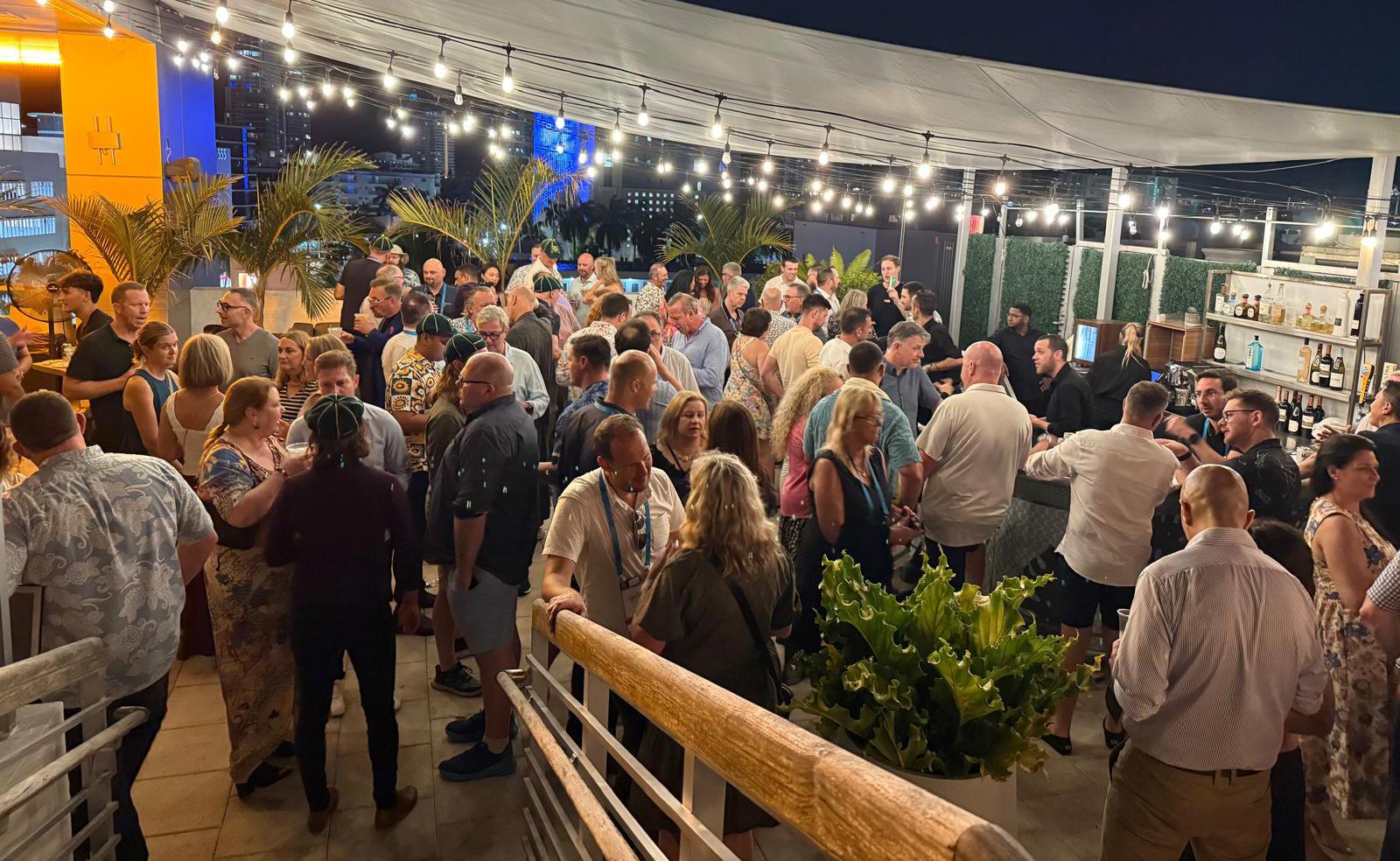
lucky to have looked after both Ghinsberg and former MDRT president Regina Bedoya this year.
“To build your own friendships, and keeping in touch with Regina and Yossi, has improved invaluable for advice and guidance going forward.
“We hope to have Yossi come to New Zealand to share his experience and insight in the future.”
MDRT is an experience every adviser should aim to have.
Everyone I have ever talked to about it says they brought new ideas back to their businesses which helped them grow, provide better advice and be more efficient.
Some think it’s a bit happy clappy. A bit
of a cult.
In some ways, that’s the beauty of it. It ain’t a staid, boring, old event (and I’ve been to enough of those over the years).
The quality controls they put on speakers ensure the calibre is top-notch. There’s hardly a dud.
(Speakers have to present their presentations and rehearse them with the organisers beforehand.
There’s a bit of vetting around what can and can’t be said. But, hey, this is a big, American-based organisation).
It’s also an opportunity to get away from the hustle and bustle of day-to-day advice and network with a bunch of some of the best advisers in New Zealand.
But it’s not just about what they do in the advice world.
These are top notch people who embrace goodness. A
Philip
Macalister sits down in Miami with two adviser family duos -
a mother and daughter, and a father and son.
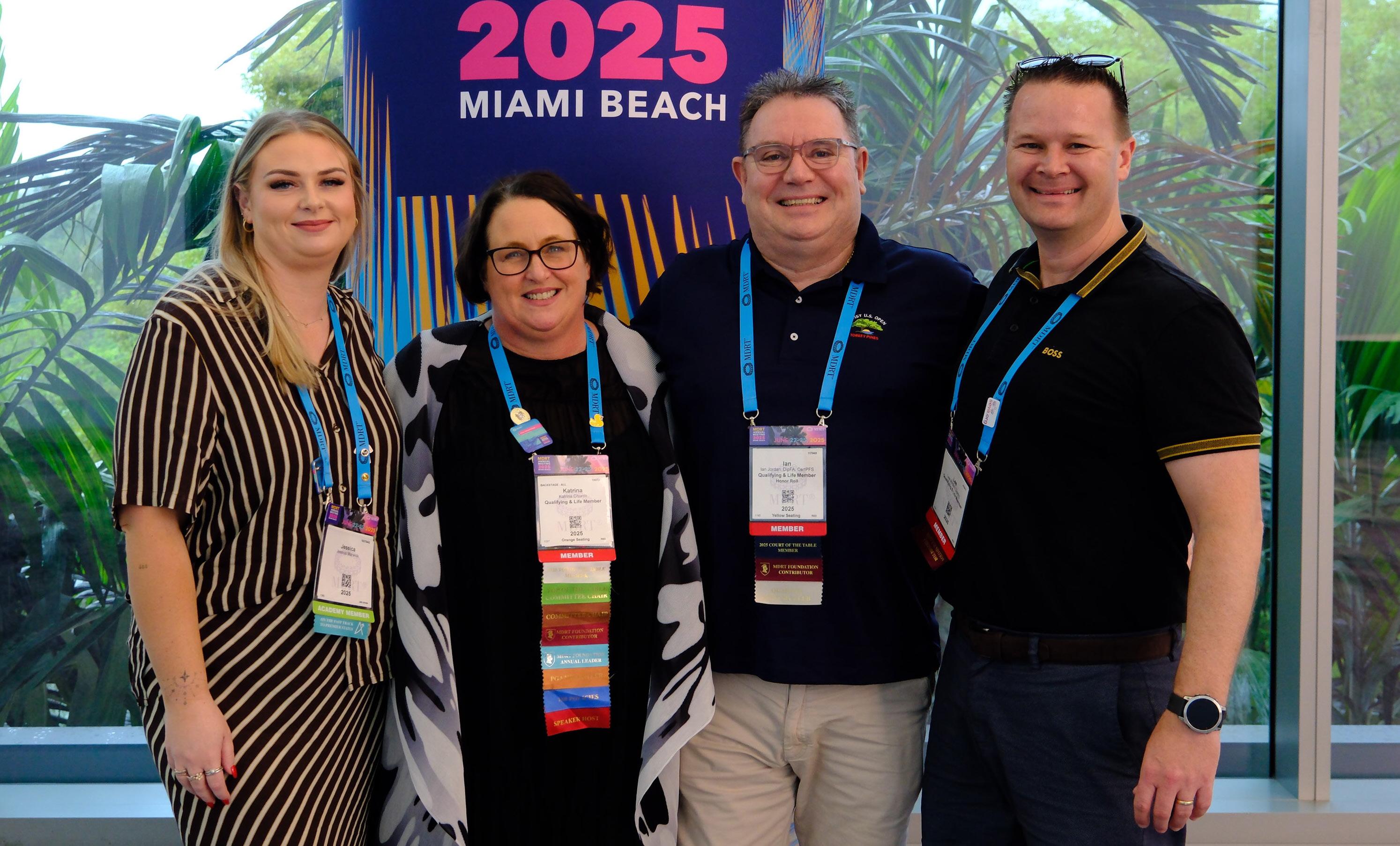
MDRT is like a big family of advisers, but Miami was extra special for two adviser families: mother and daughter Katrina Church and Jess Marwick, and father and son Ian and Lee Jordan.
First the businesses – they are very different.
Katrina and Jess are at Auckland-based Insurance People, with a team of around two dozen people across two offices.
Insurance People has around 6,000 clients and offers life and health insurance, fire and general, and is looking to add business insurance to the mix.
It sold its mortgage advice business a few years ago.
“We pride ourselves on the client experience,” Katrina says. “That's something that's really important to us.”
While she’s been an adviser for 28 years, daughter Jess has been on board for around eight years, working her way up from receptionist to adviser.
At the other end of the island, Ian Jordan is based in Lower Hutt servicing 600 clients throughout New Zealand, while his son, Lee, still lives and works in the United
Kingdom.
Ian originally began work as an adviser on the English south coast, near Southampton, back in 1982, establishing his own business three years later.
Lee, who had been working at a bank, then joined his dad in the family practice, Jordan Financial Planning, in 2006.
“I needed to expand our mortgage
‘To be able to work in the same profession, I think, is very, very special’
Ian Jordan
operations, and he came on board initially as a mortgage adviser, and then went through all of his exams and is now more qualified than I am,” Ian says.
“I then said to him, after he had not long been on board, that I had this idea of going to live in New Zealand.”
Ian emigrated to Aotearoa in 2008, and commuted every quarter between the two countries until 2019.
He says the business has always been big on technology and set things up so he could work remotely, racking up more
than 60 return flights over the 11 years.
“I'd love all the money back I spent,” he jokes.
Lee says he decided to move into the advisory world after things weren’t working out at the bank.
“I was trying to do my financial services exams for the IFA (Independent Adviser Practice), but couldn't really get the opportunities that I wanted, and [Dad] said, “Well, look, come work with me.”
The rest, as they say, is history.
One of the curious things common to both these families is just that: commonality.
Katrina, known as Kat, says that when she sometimes hears Jess on the phone talking to an underwriter, “She sounds just like me.”
She reckons Jess has learned by osmosis, having been around the business for a long time.
“She thinks just like me, but she brings her own special flavour to it.”
Lee, in turn, says clients were always getting father and son mixed up, “because we’re very similar sounding on the phone”.
“That was always a source of great unit from time to time; I'd speak to a client
and they'd be like, ‘Hi, Ian’, and I'd already introduced myself as Lee.
“After a while, I got fed up with keeping on repeating, so I just went, ‘Hi, yeah, it's Ian, yeah.’
“How's your son? Oh, he's great. He's amazing. I'm so proud of him. You know, I couldn't ask for a better son and how lucky am I?”
Like Jess, Lee has gone through a process of osmosis.
“Dad's been in the business since I was three.”
Ian: “Lee’s been in the back of the car listening to motivational MDRT tapes all of his life.”
Lee: “So when I finally did enter the financial services business, MDRT wasn't even a doubt in my mind. As soon as I was able to, I qualified and went to a meeting.”
When I ask what it’s like to come an MDRT conference with a child, Ian quickly responds, “I’m very proud.”
“What I have picked up over the years is that there are many, many members of MDRT who are wishing that their children would join their practices.
“When they see you here with your child, they go ‘Oh, wow’.
“They're all envious of it.”
He says it’s never been about his son joining the firm as an exit strategy.
“It’s a business relationship.
“I want to share this as a family; it is very special,” he says.
Kat, too, says working with her daughter is “such a privilege.”
Building a legacy
Both whanau are building true family businesses: spanning generations and creating something of a legacy.
At Insurance People, all Kat’s children are beneficiaries of the trust which owns the company.
“Effectively, I've always told them all, ‘This is actually your business that Mum and Dad work at, and now Jess’.
“So we've always said to them, ‘If there's anything you think you should bring to the table, or you want to bring to the table, please do, because it is your business’, which is always helpful when you put in long hours.”
Both Jess and Lee have had to work their way up in the respective businesses.
Kat says she wanted Jess to be respected in her own right, and she had to earn her space.
“And so that's why we did it from, ‘Start at the bottom, work your way up.’”
Innate skills
Interestingly, both Ian and Kat talk about the soft side of the business.
Kat: “We didn’t have to teach Jess the

‘We didn’t have to teach Jess the heart of the business; she saw it as she grew up’
Katrina Church
heart of the business, the heart of what we do; she saw it as she grew up.”
Lee says he talks to his Dad all the time about how there's “certain traits in our profession that you can't teach.”
On the flip side, the generational difference attracts them to different sessions at an event like MDRT – a divergence of interests which benefits the business.
For instance, Jess may go to an AI session, while Kat goes to something different.
Part of an event like MDRT is the rounded nature of the topics on offer (see the Whole Person Concept on page XX).
Kat: “We get to go back and actually get to be better humans, better people.
“I watch people now, especially when we come to MDRT, see that Jess is Jess, not just ‘Kat's daughter’, and that's really special to see, too.
“I watch her shine in her own space. Jess goes off to different sessions and she messages me and goes, ‘I just went to this amazing session’… and that just brings me so much joy.
“She gets the passion of it very much.”
The real work, they all agree, is when they get home and have to actively decide which ideas to implement - because that's the key with MDRT.
Lee says he and Ian decide which sessions to go to and share notes, explaining that advice is advice no matter which side of the world you’re on.
“At the heart of our businesses, we're doing exactly the same thing.
“You're trying to solve client problems in the best way possible. And you just want be a better version of you.”
Kat echoes this commitment to personal development, saying MDRT is about more than growing their businesses.
“We're here to improve our businesses. Yep, absolutely.
“We're here to take a moment out of our business and reflect, look at ways of doing things better stronger and faster.
“But actually, we're here to be better humans. So what better place to take your gorgeous children. To say, ‘This world is actually a bigger world than you've ever experienced living in New Zealand.
“There's all these people that are the same, same but different, and let's embrace that. Let's look at our community and look at what we can do as leaders in our community to improve it.”
For all four, it is also about MDRT raising money for worthy causes, as I write about in my essay.
“Look at how much has been raised in five days, just from sharing a simple message,” Lee says.
“Many people care, but we get an opportunity to show that - over a very focused period of time.”
Give away your best ideas
But it’s about sharing as well as caring.
“I find it really interesting: there's not many professions where you can share an idea that can change somebody's business completely, and it not really affect you,” says Lee.
He jokes that you can give away your best ideas, at the same time acknowledging the truth of it: “All my best ideas have been pinched, borrowed and stolen from other people.”
There are so many clients who need the services of an adviser, it wouldn’t matter “if we were in the same town and we were two doors down. I could give them all my business ideas; it's not really going to affect my business that much.”
In the spirit of MDRT, if he has a client he can’t help, “I will refer to an MDRT team member all day long, because I know the code of ethics is there and I know they can be trusted.”
Both duos say they learn from the other generation.
Kat: “I think it's great having different generations in a business. Very much so.
“We've got a lot of knowledge to pass on, and, you know, never forget the past, never forget things how it's been done.
“But actually, [addressing the Jess and Ian], you guys bring a lot to the table, too, and I think it's really neat to be open to that. Different ways of speaking to people, different ways of engaging.”
Ian: “They're quicker at absorbing all the new technologies and all the AI stuff.
“Like others have said, the key goal is to solve the client’s problem.
“AI is the new thing right now and it will continue to evolve and change many people's lives in many ways, but the old ways of doing things are still sometimes the best ways.
“Everyone's just looking for a little bit of connection, including, family members. To be able to work in the same profession, I think, is very, very special.”. A
The current Government does not seem to be noticing the unintended consequences of legislation brought in by the last lot – laws which are impacting investors and small businesses.
BY DAVID VAN SCHAARDENBURG

One of the market expressions that holds true over time is, ‘There’s no free lunches in financial markets’.
This expression is highly relevant to the recently launched, with limited fanfare, Depositor Compensation Scheme.
This grand scheme was thought up and passed into law by the previous bunch of ‘we know best’ politicians.
Sounds nice on the surface, and generally looks comforting, which is probably why the new bunch of governing politicians haven’t stopped this new law coming into effect in July 2025.
However, history tells us that political interference in the flow and/or pricing of capital can have unintended and sometimes painful consequences.
Some of us oldies can remember how Muldoon’s increasingly long list of rules impacting capital flows left New Zealand an economic basket-case by the mid-1980s.
The basics of the scheme
If you have up to $100,000 deposited with one of the deposit takers on the ‘list’, if they default, you are insured for up to the full $100,000 or any less invested sum.
Deposits made above this threshold are not covered.
The scheme is funded by a levy on deposit takers, which rises as the risk score of that entity goes up.
However, based on current projections, it’s expected to take up to 20 years to have sufficient funds to cope with defaults.
In the meantime, the New Zealand Government guarantees those who have deposits with the listed deposit takers.
This legislation has been brought in at the same time that the larger banks have had to increase their capital adequacy from 9.5% to 14.5% of assets, materially decreasing their credit risk.
The result is that all listed deposit takers, for most of their investors, now have the same credit risk as the New Zealand Government.
No surprise then that the more risky entities on the list from 1 July have materially reduced their TD rates, notwithstanding variances in their credit ratings.
For example, Christian Finance (BB+ rating) was offering 3.95% for 1 Year TDs vs the BNZ (AA-) offering 4.0%.
The rational term-deposit investor is now no longer relying on credit ratings but is spreading their exposures across the listed deposit takers, such that they do not have exposure to any one on the list that is more
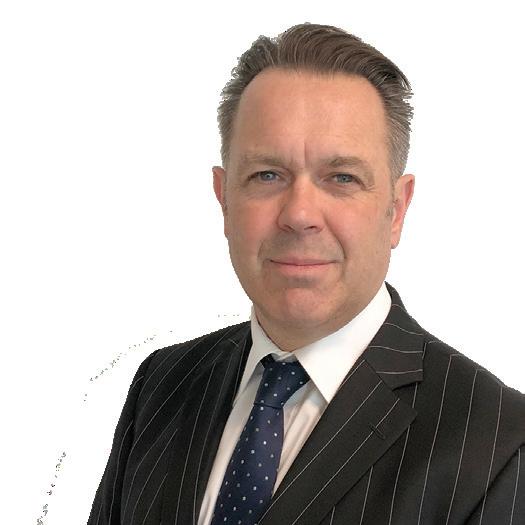
‘History tells us that political interference in the flow and/ or pricing of capital can have unintended and sometimes painful consequences’
David van Schaardenburg

than $100,000.
The convergence of interest on offer notwithstanding the organisations credit rating is an irrational situation, reflecting the rule of unexpected outcomes: meddle in something you don’t fully understand and weird things happen.
The New Zealand taxpayer now has a new set of contingent liabilities for which I can see no benefit.
The real beneficiaries are the more risky entities on the deposit takers list (and their shareholders) whose cost of funds has dramatically decreased.
Over the last year, I’ve heard from a number of entrepreneurial small business owners (or wannabees) that its nigh on impossible to get loans for business acquisition or expansion from the high street banks.
Amendments were made to the existing CCCFA, which governs consumer credit, due to the media highlighting the activities of a small set of predatory (read rip-off) lenders.
Again, the prior Government thought they were doing a great (vote-winning) act by protecting the financially vulnerable, but in this process didn’t
sufficiently listen to those who pointed out the wider negative consequences of these amendments.
I am also not aware of the replacement Government seeking to turn back any element of these legislative changes.
So in a modest way I thought I’d test the rationality of today’s system for obtaining new credit lines.
A few months ago, scammers loaded up fraudulent transactions on my main credit card.
While immediately cancelling it, I had to battle my bank to get them to accept their processes were flawed and that the fault for the acceptance of these transactions was theirs (and the liability).
To guard against the possibility of a repeat, with all the hassles from changing my credit card, typically used on a dayto-day basis, I thought I’d get a low-limit backup card (up to $1000) to use mainly for online transactions.
For what was a totally immaterial request for new credit relative to existing credit lines and net worth, a long list of questions.
Quite different from times past when my bank of 45 years had often been keen to lend me beyond my needs and with no questions asked.
Accepting times had evolved, the questions, many rather meaningless, were duly answered and application made.
The end result was sort of unsurprising given anecdotal evidence.
Forget my complete lack of debt, another credit card with much a higher limit which was paid off monthly, and not inconsiderable financial wealth.
Like most New Zealanders over the age of 60, I regularly spend more than my regular income.
Therefore, they decided it was not in my interest to access a new credit facility.
Application declined! How weird.
The bank spent far too money assessing an immaterial situation where the end result was determined by an inflexible, and illogical, set of criteria.
If this small test is reflective of the wider situation, then no surprise the small business sector is struggling in a challenging economy as a vital source of ongoing capital is denied to them.
Foot in mouth times two. A
David van Schaardenburg is independent of any fund manager and is CEO of the Ignite Adviser Network, whose FAPs provide advice to over 15,000 investment clients.
You’ve probably not thought to do so, but insurers can facilitate important conversations with clients about end-of-life choices
BY RUSSELL HUTCHINSON

Can we have a health system that respects patient’s wishes in both life and death?
Alongside voting for their preferred political parties, New Zealanders had another vote to cast in the 2020 general elections – whether to support an Act that would give the terminally ill the chance to choose to die.
Following this public referendum, where 65.1% of voters supported the Act coming into force, New Zealand passed the End-of-Life Choice Act in 2021.
This legislation gives people with a terminal condition who meet a series of safeguards the right to choose to end their lives.
Patients must meet medical criteria to be eligible for an assisted death –they must be suffering from a terminal illness that’s likely to end their life within six months; they must be in an advanced state of irreversible decline in their physical capability; they must be experiencing unbearable suffering that cannot be relieved in a manner that they consider tolerable; and they must be competent enough to give informed consent.
Back in 2020, prior to the Act coming into effect, we modelled what we thought
would happen once the changes were in place, upon when we estimated 238 Medical Assistance in Death (MAiD) deaths over the course of a year – see table below.
In the 12 months from the Act coming into effect in New Zealand (November 2021 – November 2022), MAiD was utilised 257 times, and accounted for around 0.6% of deaths in New Zealand at that time.
Between November 2022 and December 2023, the most recent period for which reporting is available, MAiD
was used 430 times and accounted for around 1% of deaths in New Zealand at that time.
There has been an uptick in assisted deaths over the latest period, which was higher than our predictions, perhaps due to more awareness of the service.
Overall, the introduction of the law has not increased deaths in a meaningful way, and we don’t think that will change.
This is because it brings forward an expected death by, in most cases, only a matter of, typically, three months.
The New Zealand Herald recently ran a story about how the Act is working – or

not.
There have been many people who have requested a medically-assisted death but who have been declined, on the basis that medical professionals cannot say with certainty that death is likely within six months.
The End-of-Life Choice Society says this requirement excludes a large number of patients, especially those with neurogenerative diseases where decline doesn’t happen in a linear fashion.
The Society advocates replacing the six-month rule with a requirement that patients have a ‘serious, irremediable and life-limiting medical condition’.
In Canada, an amendment to their legislation has removed ‘reasonably foreseeable natural death’ as an eligibility criterion.
In most of Australia, the threshold is 12 months for patients with neurodegenerative conditions, six months for others.
Legislation requires the Ministry of Health to undertake a review within three years of the Act becoming law, and every five years thereafter, with the first review due to be finished this November.
Recommendations aren’t binding, and the current Government is potentially
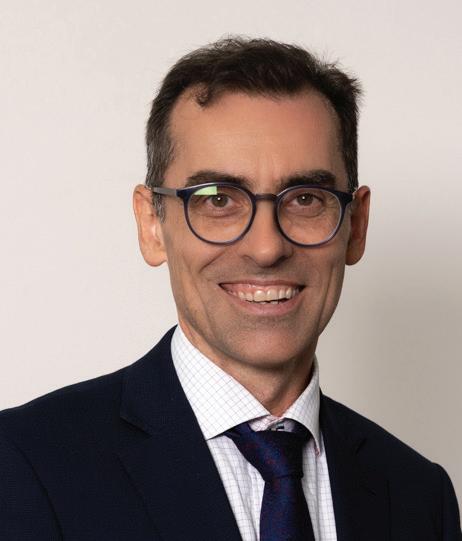
‘[It’s] important is to have discussions on death and dying, whether that’s with your loved ones or your clients’
more conservative than the previous one, so any law changes may come down to a private member’s bill - or the review may be ignored and left to a subsequent Government to consider.
But the proposed change in the sixmonth rule is not the only interesting critique of the current regime.
What about those who don’t have a terminal illness? What if a sudden and catastrophic medical event leaves someone in a situation where they would prefer to forgo treatment that extends his or her life?
Those with some forewarning of dire health circumstances that could result in death may put in place a ‘DNR’ or ‘do not resuscitate’ order.
Others may have created an advanced care plan that sets out the medical choices depending on different scenarios.
However, these advanced care plans are not currently legally binding, and frequently ignored.
Barbie Duffy had a living will in place but following a stroke in October 2021 her wishes were not followed.
Her stroke left her unable to speak, read or write, with limited comprehension and movement.
And despite wishes clearly set out in her advance directive to withdraw care in the case of ‘severe loss of mental or physical capacity’, and despite her daughter Louise, who had enduring power of attorney, confirming Barbie’s wishes were current, the hospital put Barbie on a drip, prolonging her life.
Louise has launched a petition (7,332 signatures at the time of writing) to make a person’s directives legally binding.
Ultimately, Louise is calling for a national register of standardised medical advance directives (or ‘living wills’), which outline a person’s wishes if they were to lose mental or physical capacity or quality of life.
These may include directives that
include withdrawing care – conversely, they may authorise extraordinary measures to keep a person alive.
People who choose to make these advanced care plans are setting out how they want their medical treatment to progress, even if they are not in a position to be able to communicate their wishes.
In some cases, this means people are choosing not to have treatment, no different than someone choosing to refuse pain medication if they broke a bone.
At this time, there is no guarantee these advance directives will be followed.
This issue raises important questions about patient choice in treatment.
As private insurance is often taken up by clients who want to have more control and choices in their healthcare, private insurers should understand this motivation: it is a widely held critique of our health system that it often acts in a paternalistic way.
This issue can underpin all sorts of challenges: whether it is male staff unable to fully comprehend endometriosis pain, or cultural insensitivity, or the poor quality of meals.
The above points to how important is to have discussions on death and dying, whether that’s with your loved ones or your clients.
At an incredibly difficult time, having the people with medical authority know what you would like to happen, and having ensured you have the right cover in place to look after the ones you leave behind, will remove some stress from those left behind.
Insurers, whether they are health focused, or life focused, or both, can have a role in facilitating these conversations.
In an environment where we often hear insurers talking about relevance, we see opportunities for it all the time – this is another one. A
Russell Hutchinson is a Director of Quality Product Research Limited.
Returns are calculated to 31/07/2025. Returns are calculated before tax, after fees, except for the non-PIE categories, which are after tax and after fees. For more information about this table and the methodology behind the data, contact helpdesk.nz@morningstar.com or go to www.morningstar.com.au
© 2016 Morningstar, Inc. All rights reserved. Neither Morningstar, nor its affiliates nor their content providers guarantee the data or content contained herein to be accurate, complete or timely nor will they have any liability for its use or distribution. To the extent that any of this information constitutes advice, it is general advice and has been prepared by Morningstar Australasia Pty Ltd ABN: 95 090 665 544, AFSL: 240892 and/or Morningstar Research Limited (subsidiaries of Morningstar, Inc.) without reference to your objectives, financial situation or needs. You should consider the advice in light of these matters and, if applicable, the relevant Product Disclosure Statement (in respect of Australian products) or Investment Statement (in respect of New Zealand products) before making any decision to invest. Neither Morningstar, nor Morningstar’s subsidiaries, nor Morningstar’s employees can provide you with personalised financial advice. To obtain advice tailored to your particular circumstances, please contact a professional financial adviser. Please refer to our Financial Services Guide (FSG) for more information www.morningstar.com.au/fsg.asp
As usual it has been a busy month on Good Returns . Here is a list of the top 10 most read stories over recent weeks.
An updated Code of Conduct for all advisers has been approved by the minister of Commerce and it does not require advisers to seek qualifications higher than Level Five.
Want US shares with your global equity fund?
Kernel Wealth yesterday rolled out a suite of new funds and has already had strong interest shown from advisers.
An unnamed insurer had dobbed an adviser in for trying to write policies on non-existent clients.
Much lower performance fees in the year ended March meant Milford Funds’ annual net profit fell 13.3% to $16.9 million.
NZX is facing growing competition in funds management and may have overspent on its wealth tech platform, according to a Forsyth Barr analyst.
ongoing shake up in financial services continues with Salt Asset Management being sold to an Auckland-based manager.
NZX is facing growing competition in funds management and may have overspent on its wealth tech platform, according to a Forsyth Barr analyst.
After years of neglecting the adviser market, the investment manager is going on the charm offensive.
Chief underwriter Stephen Potter has left AIA NZ after six and a half years in the role.




